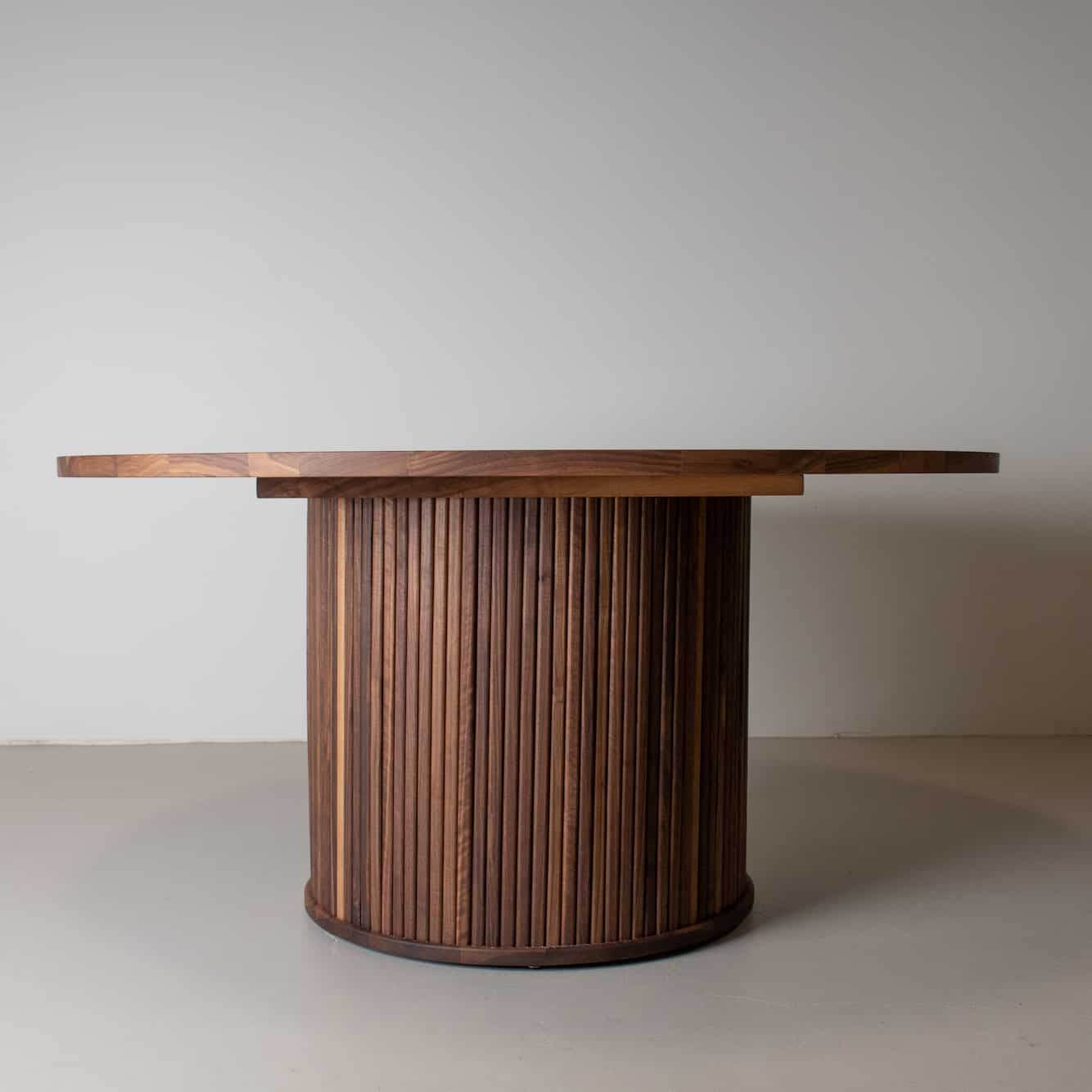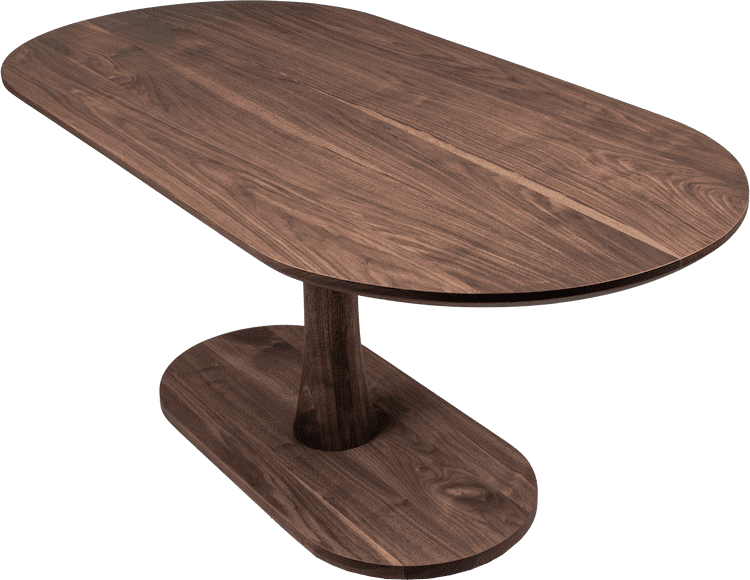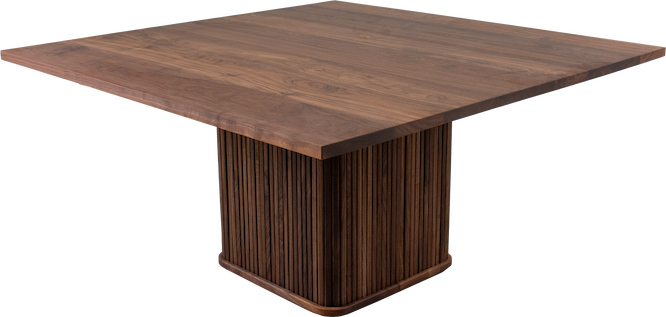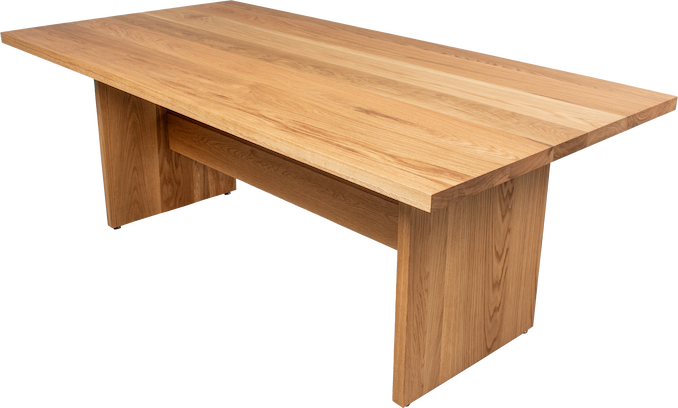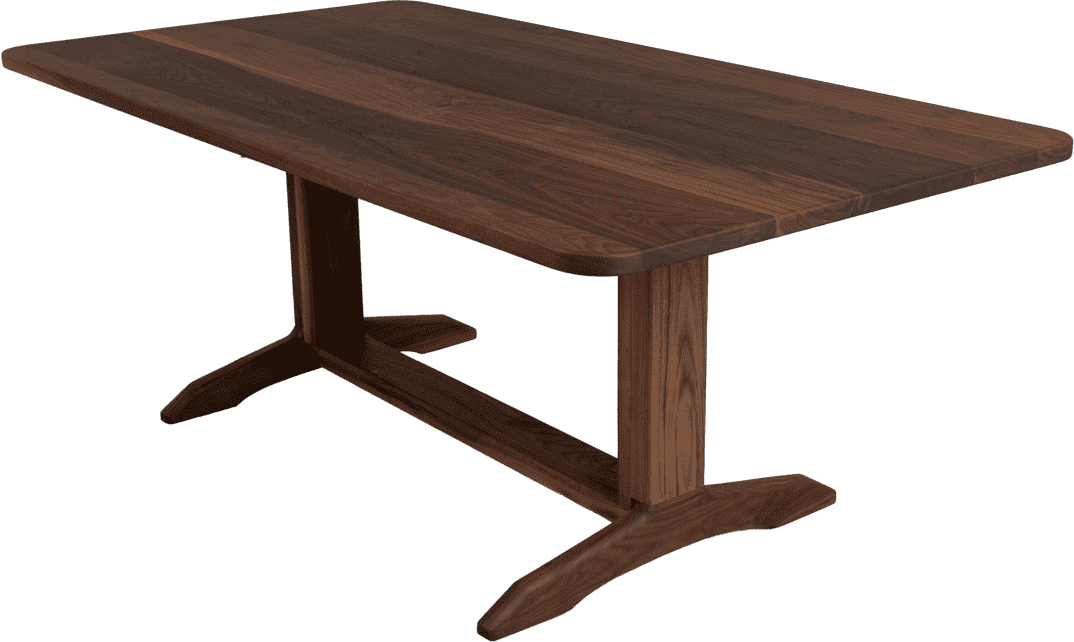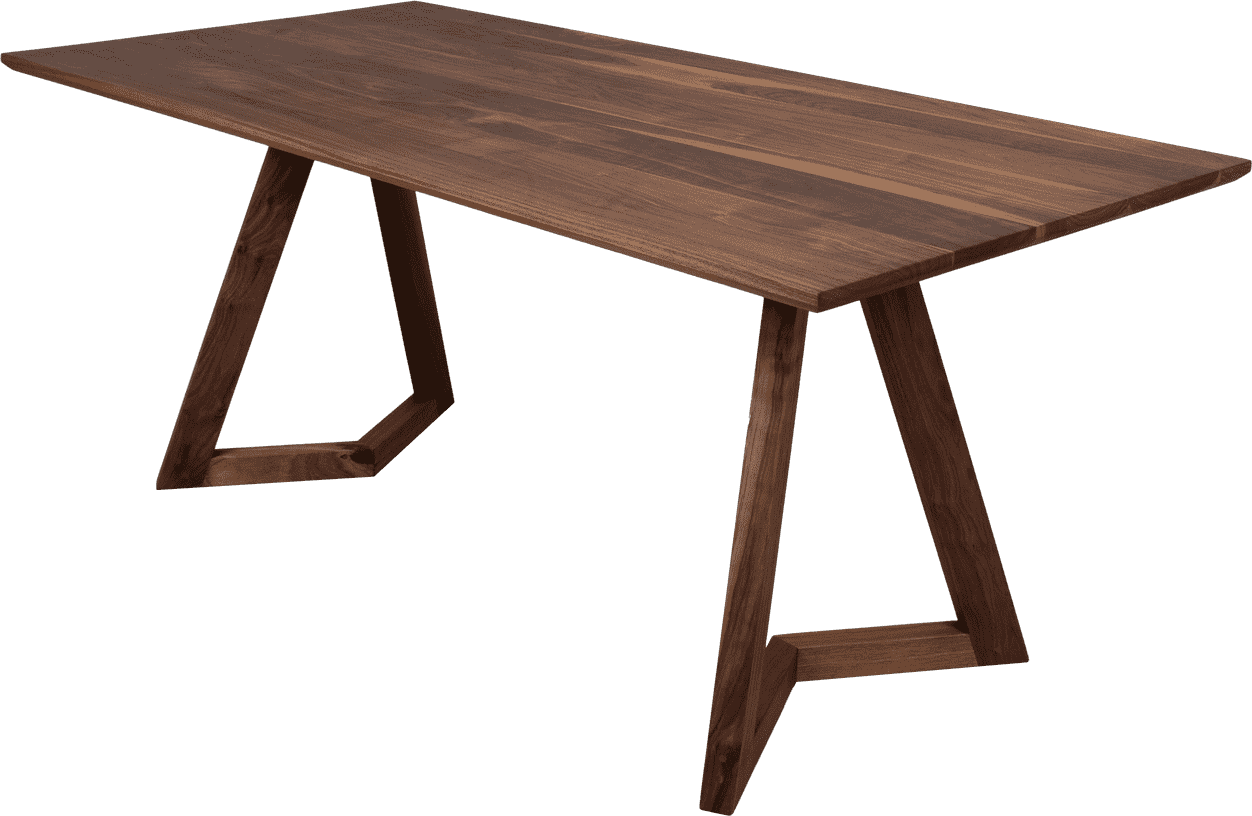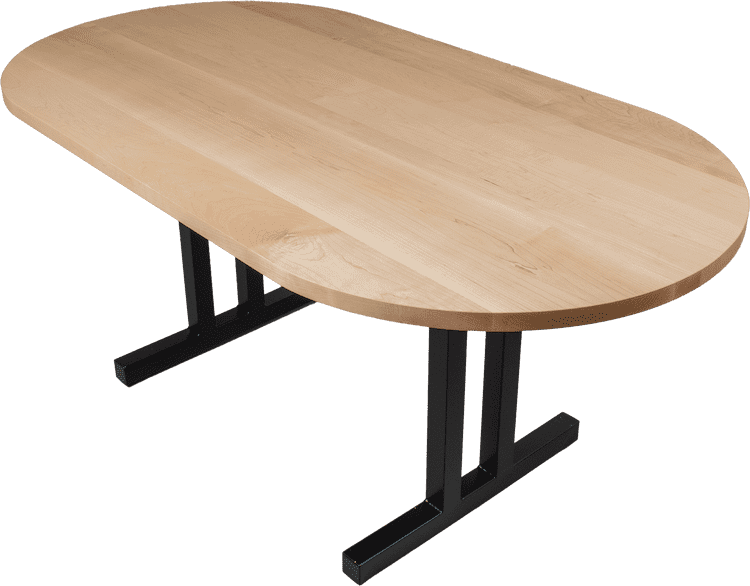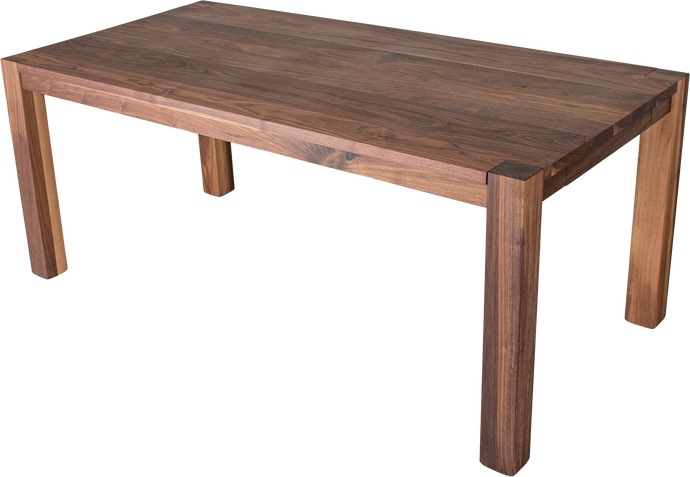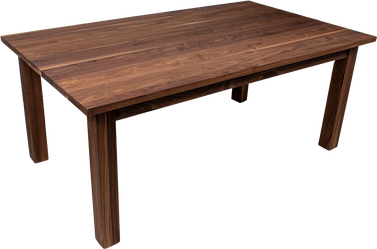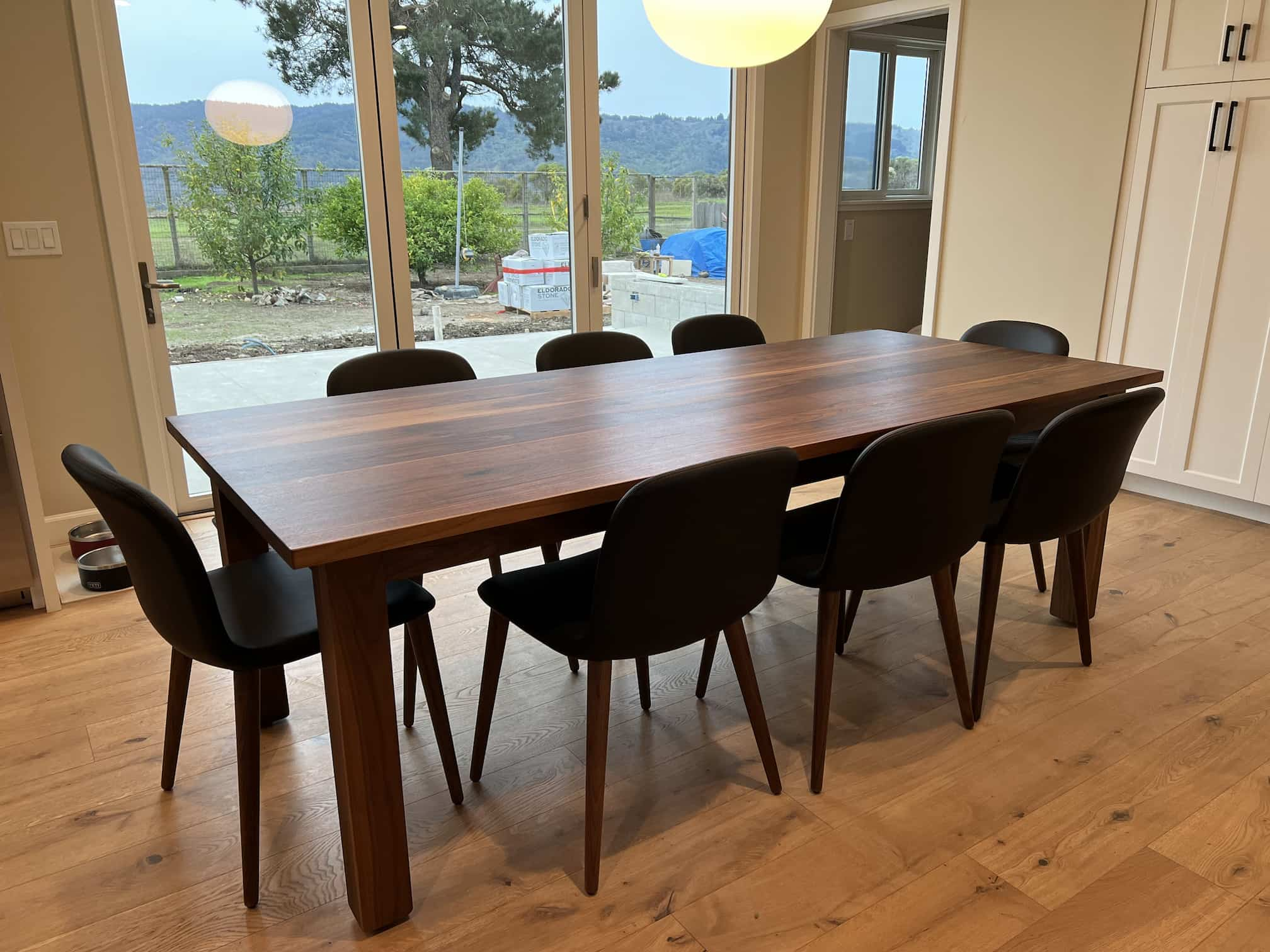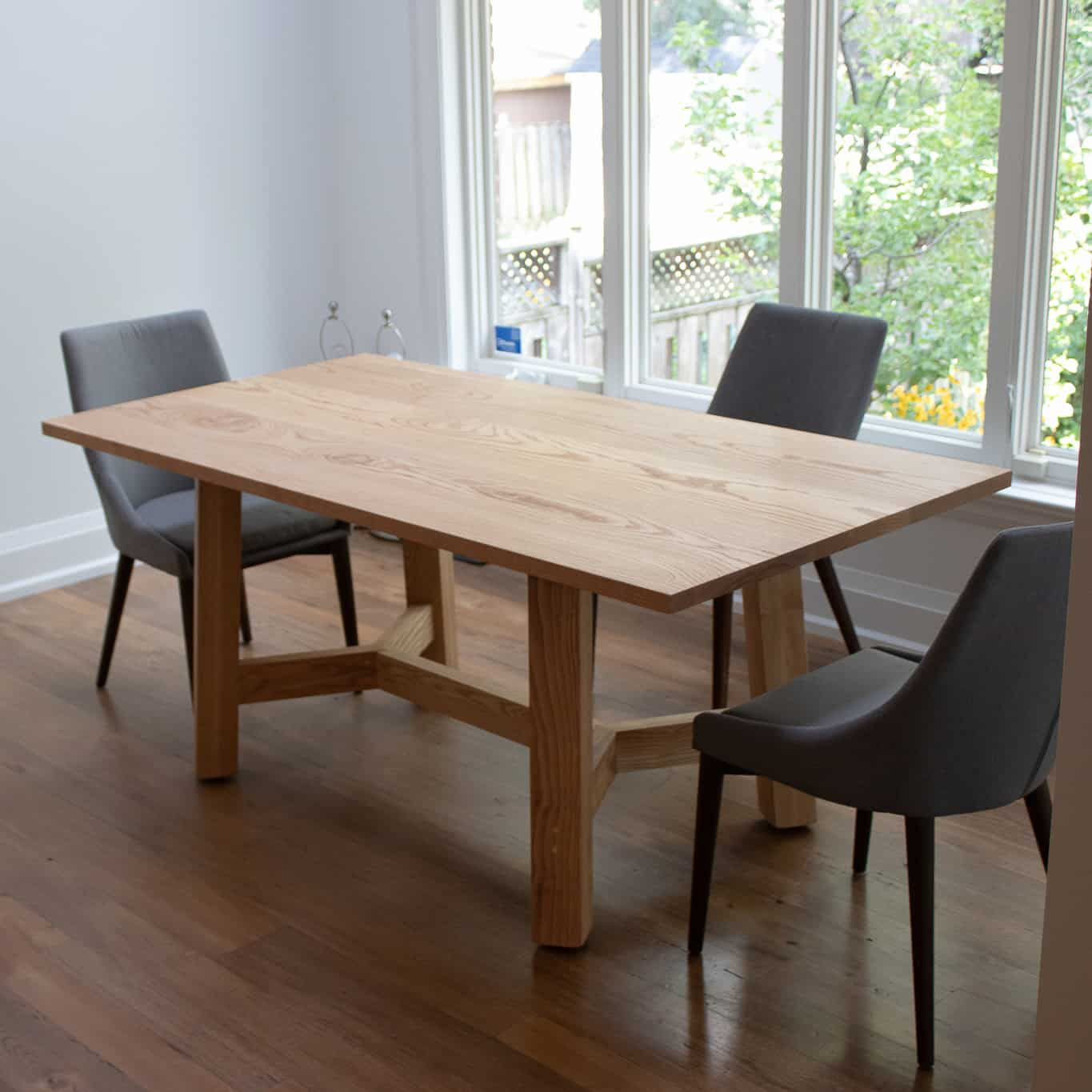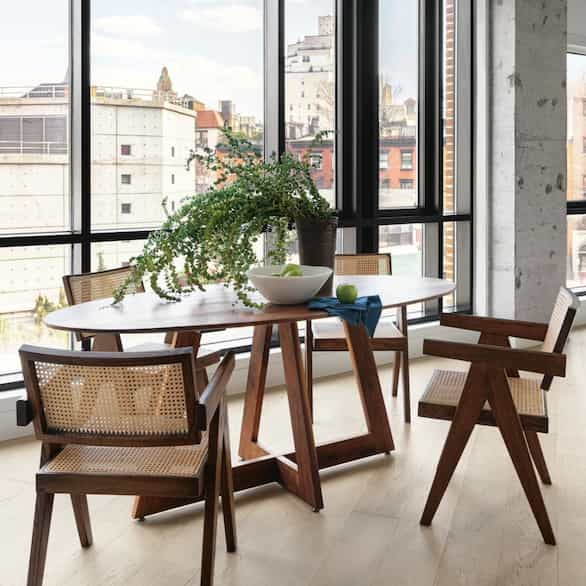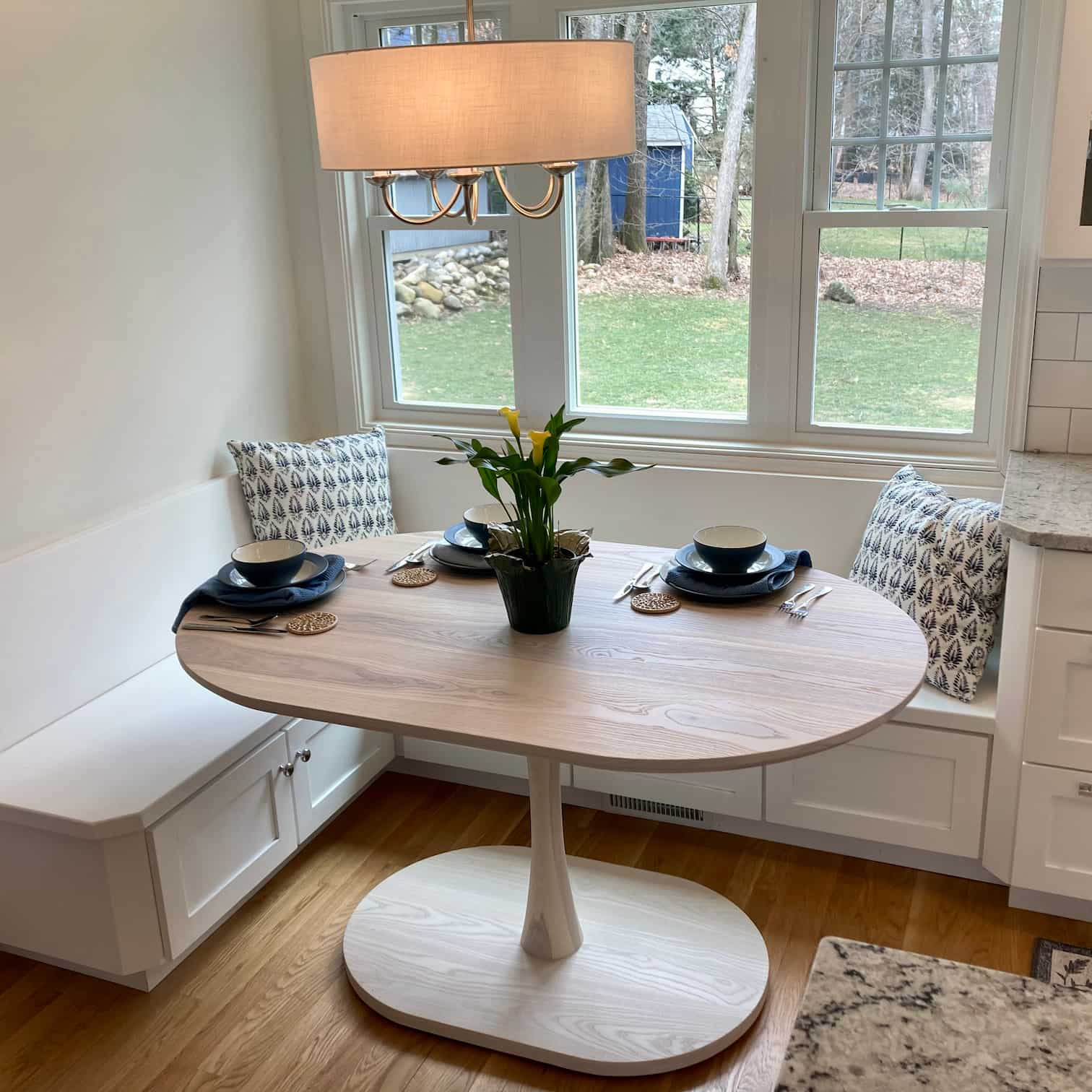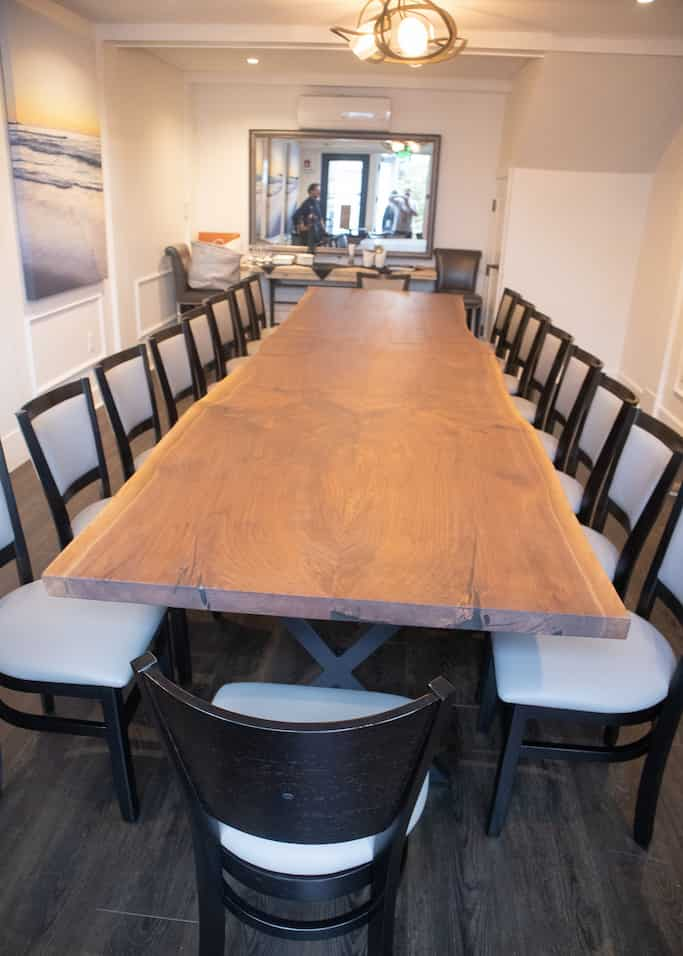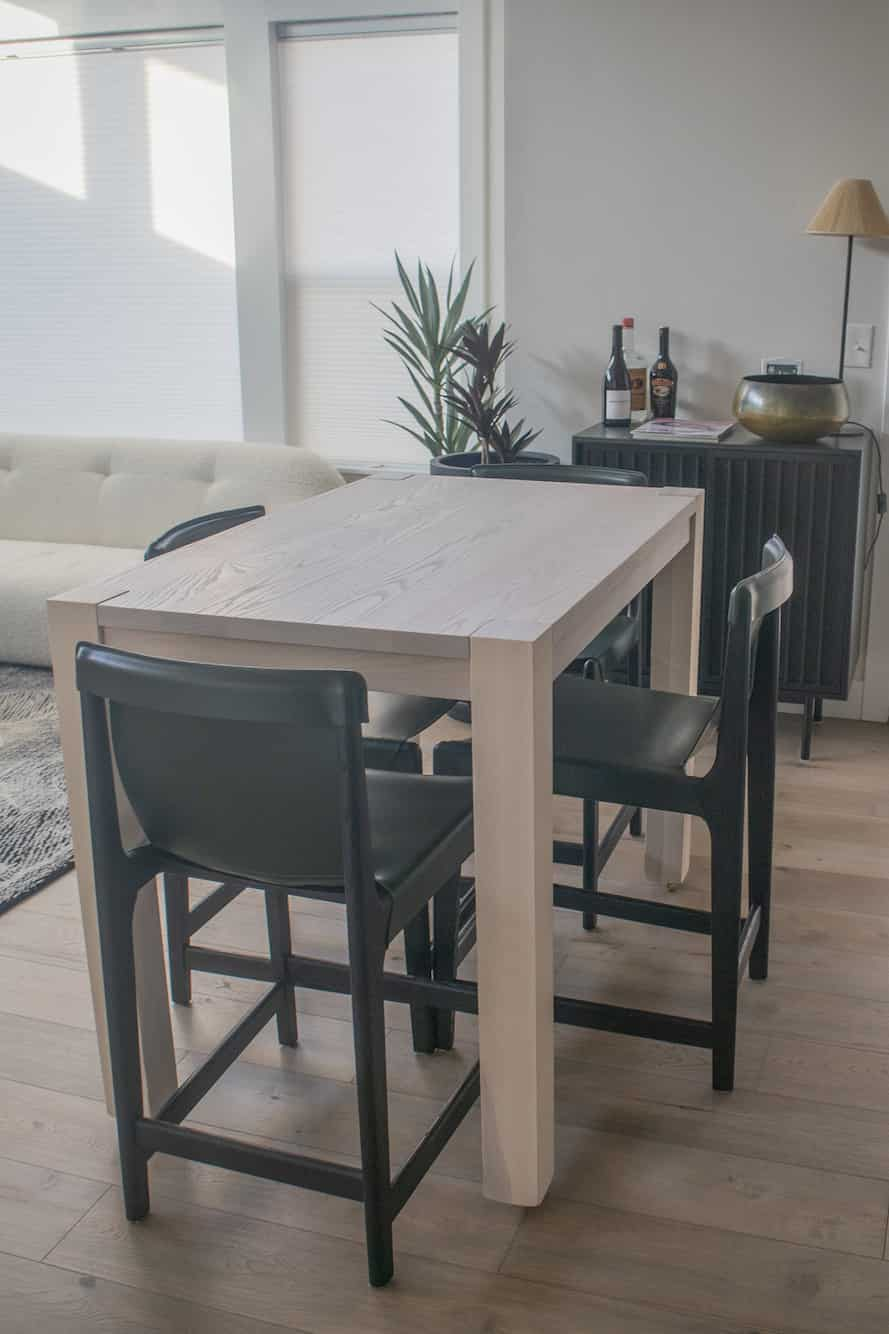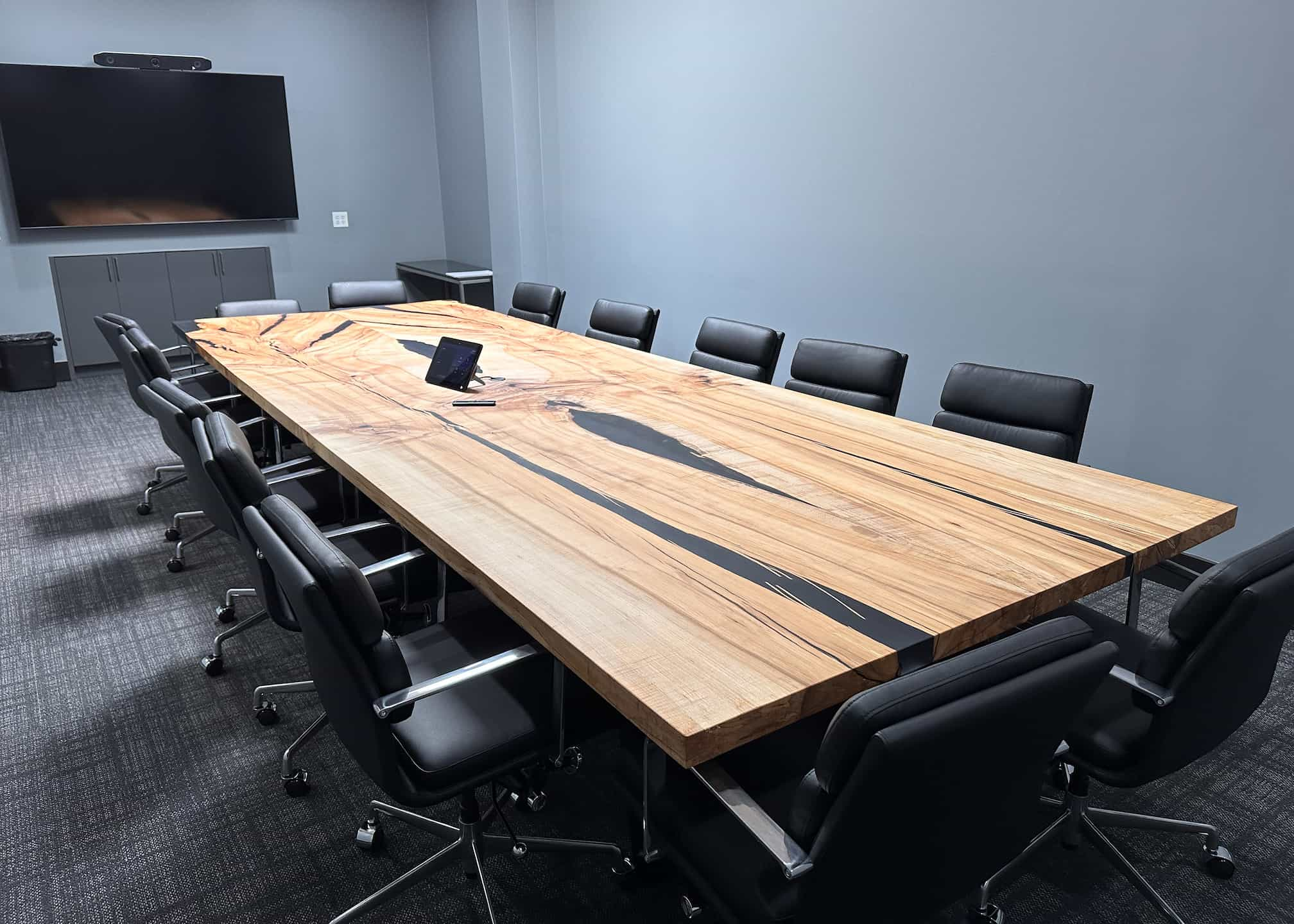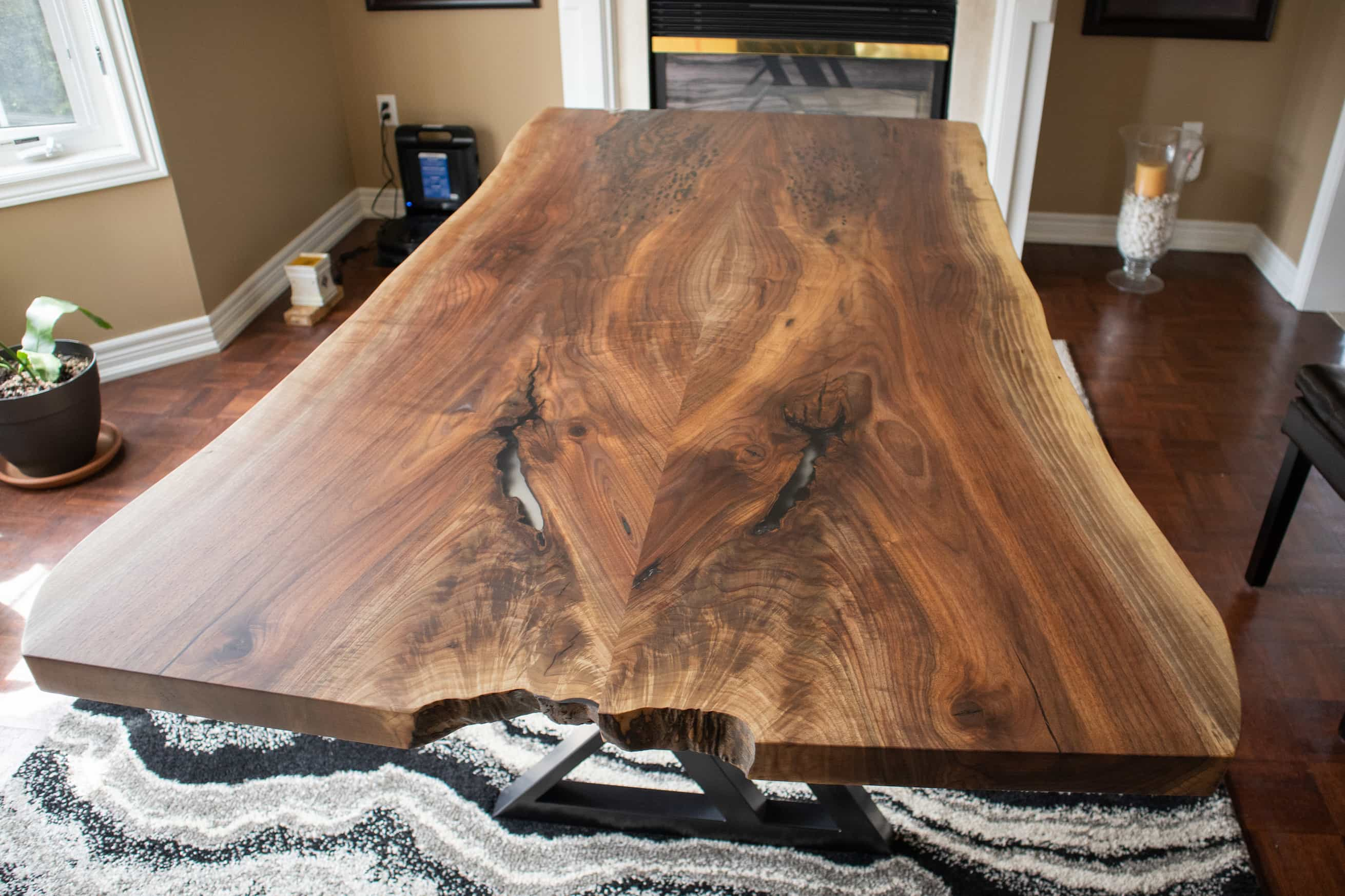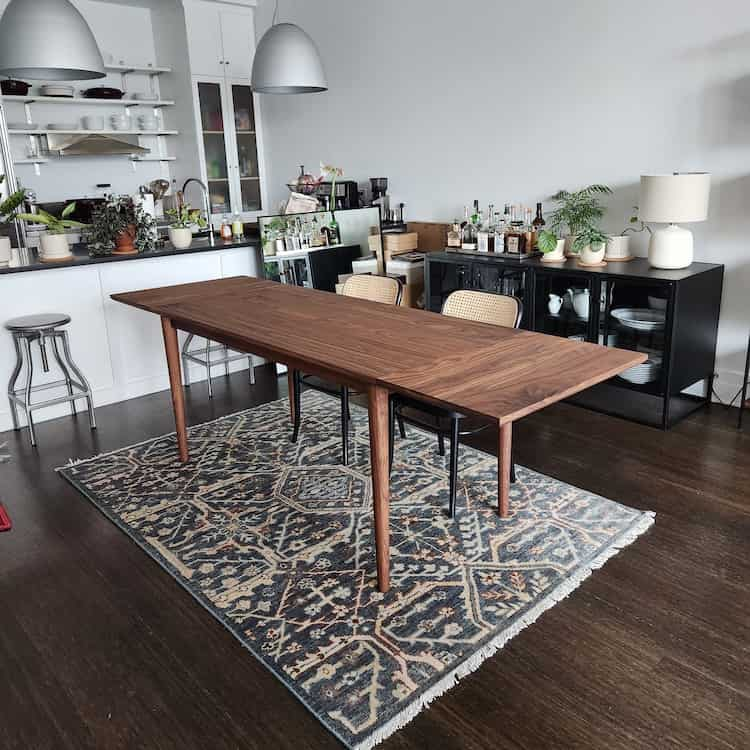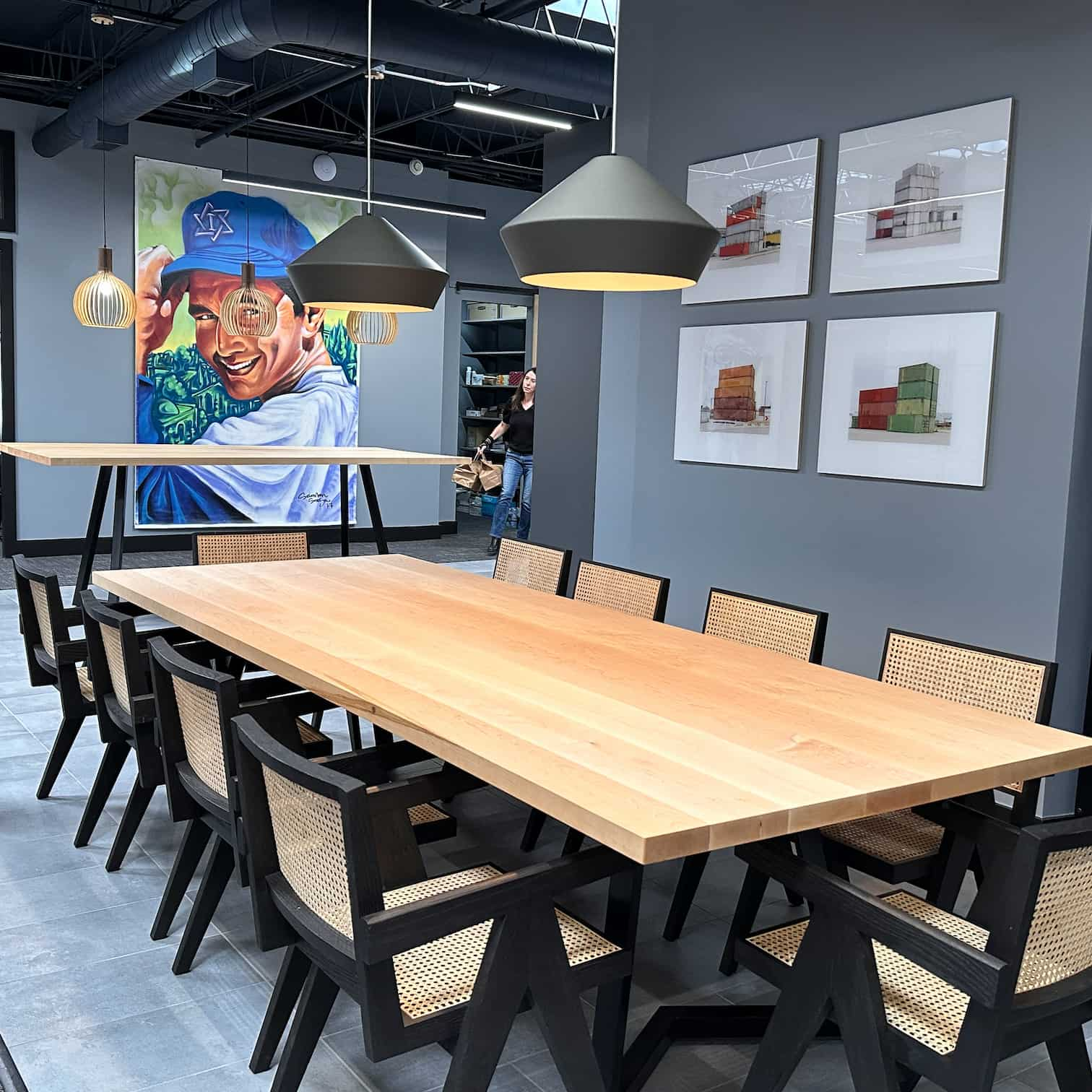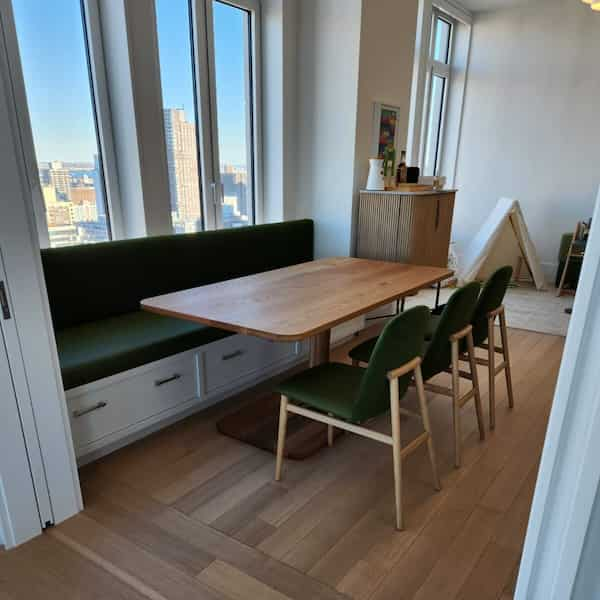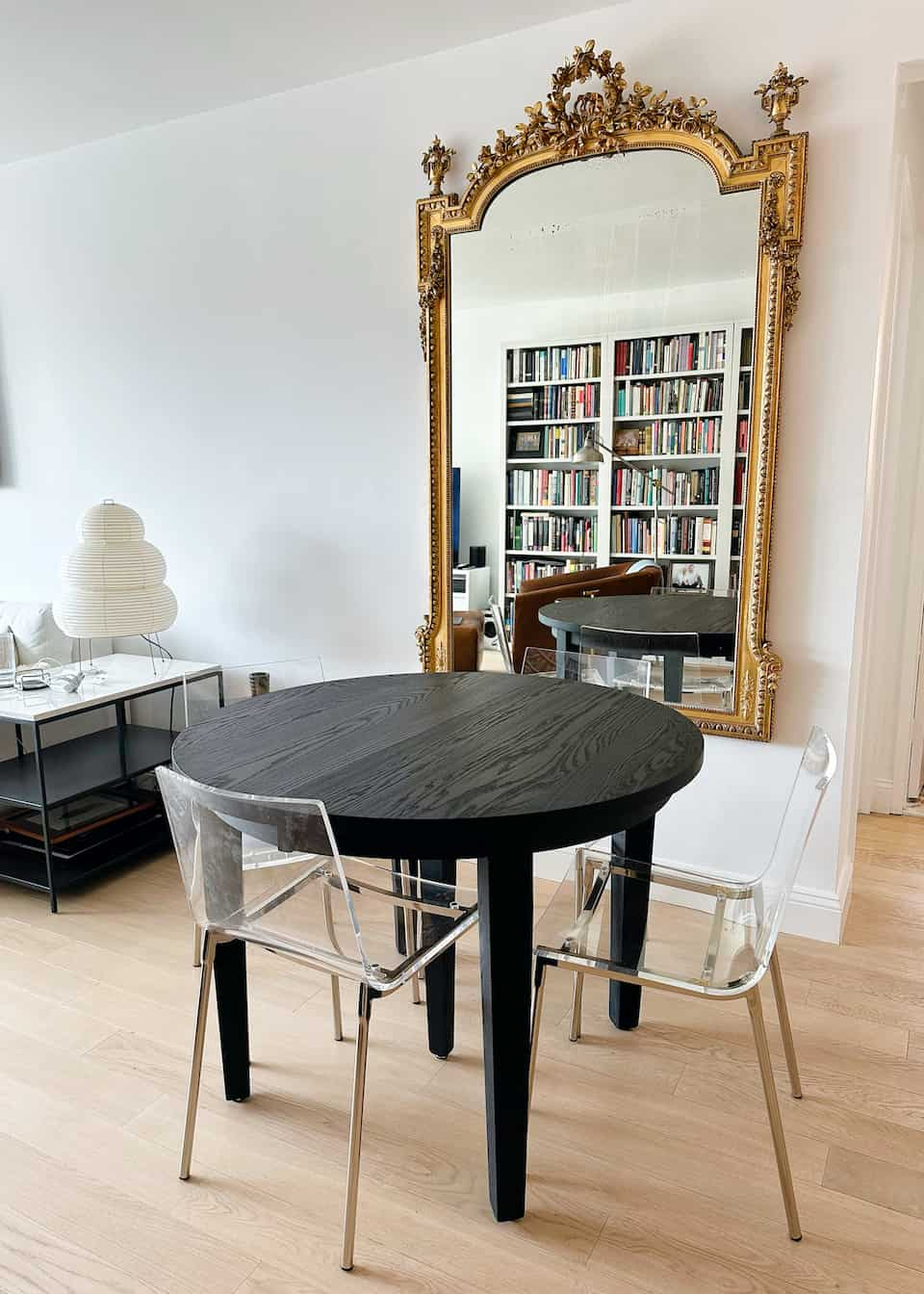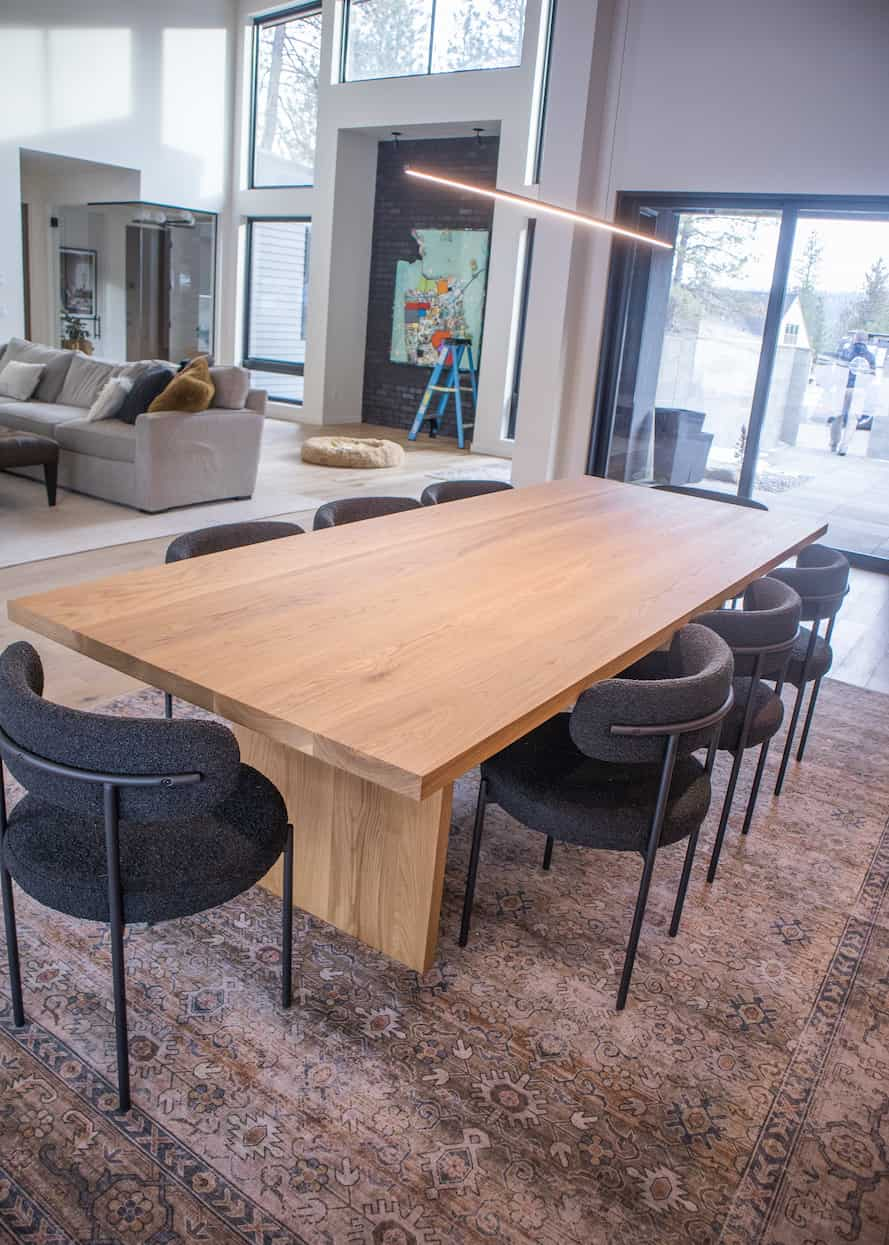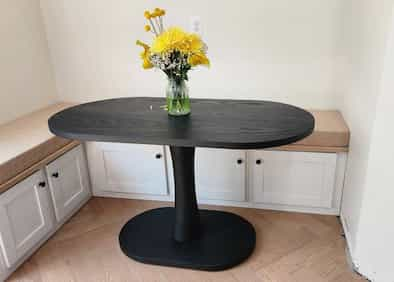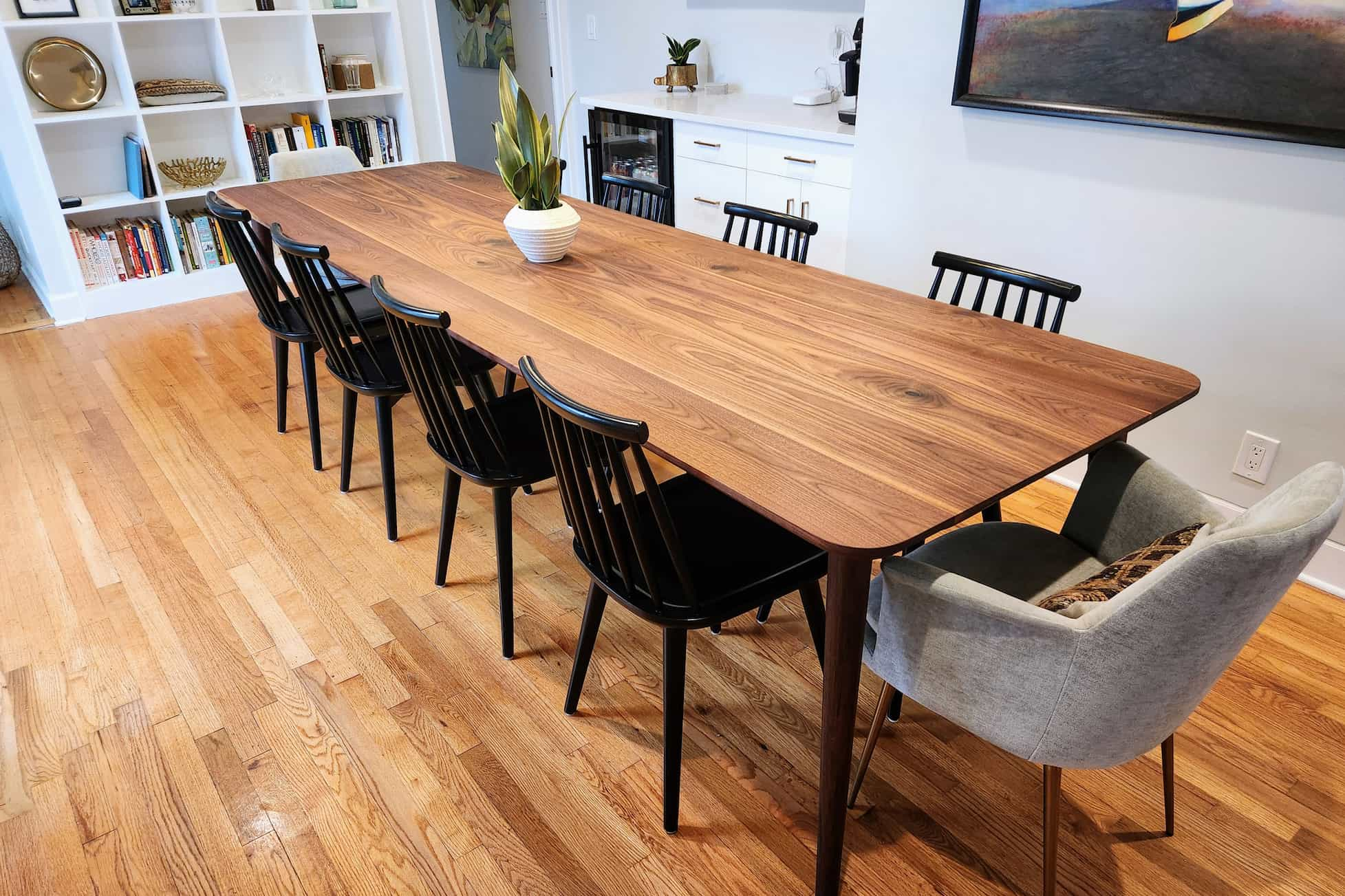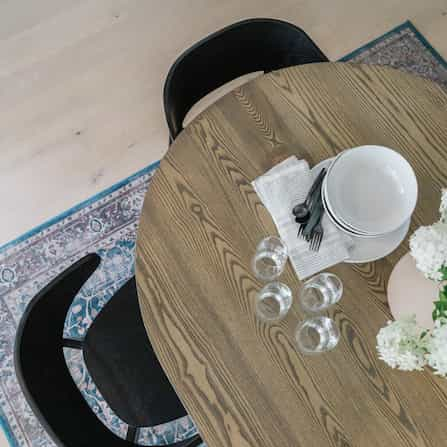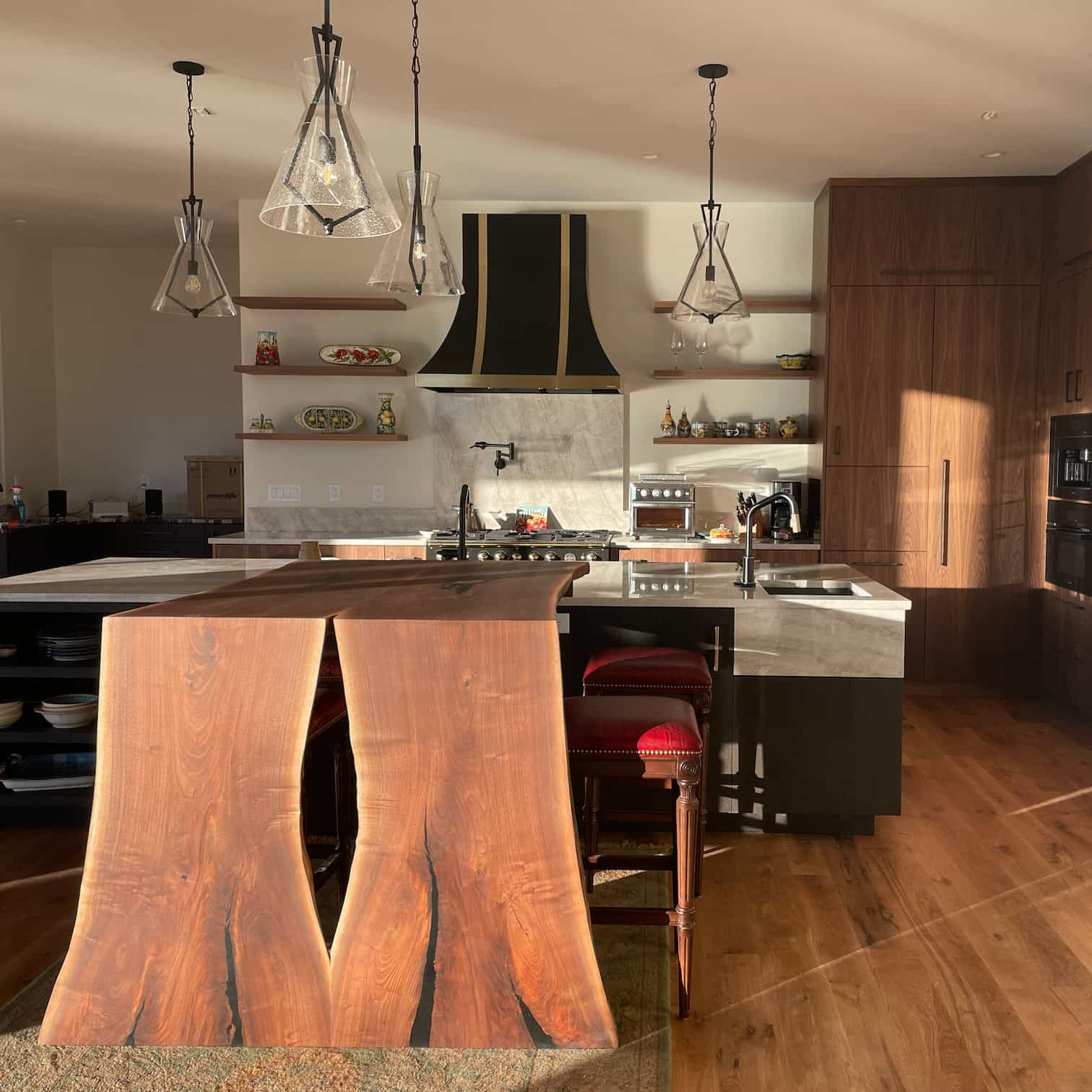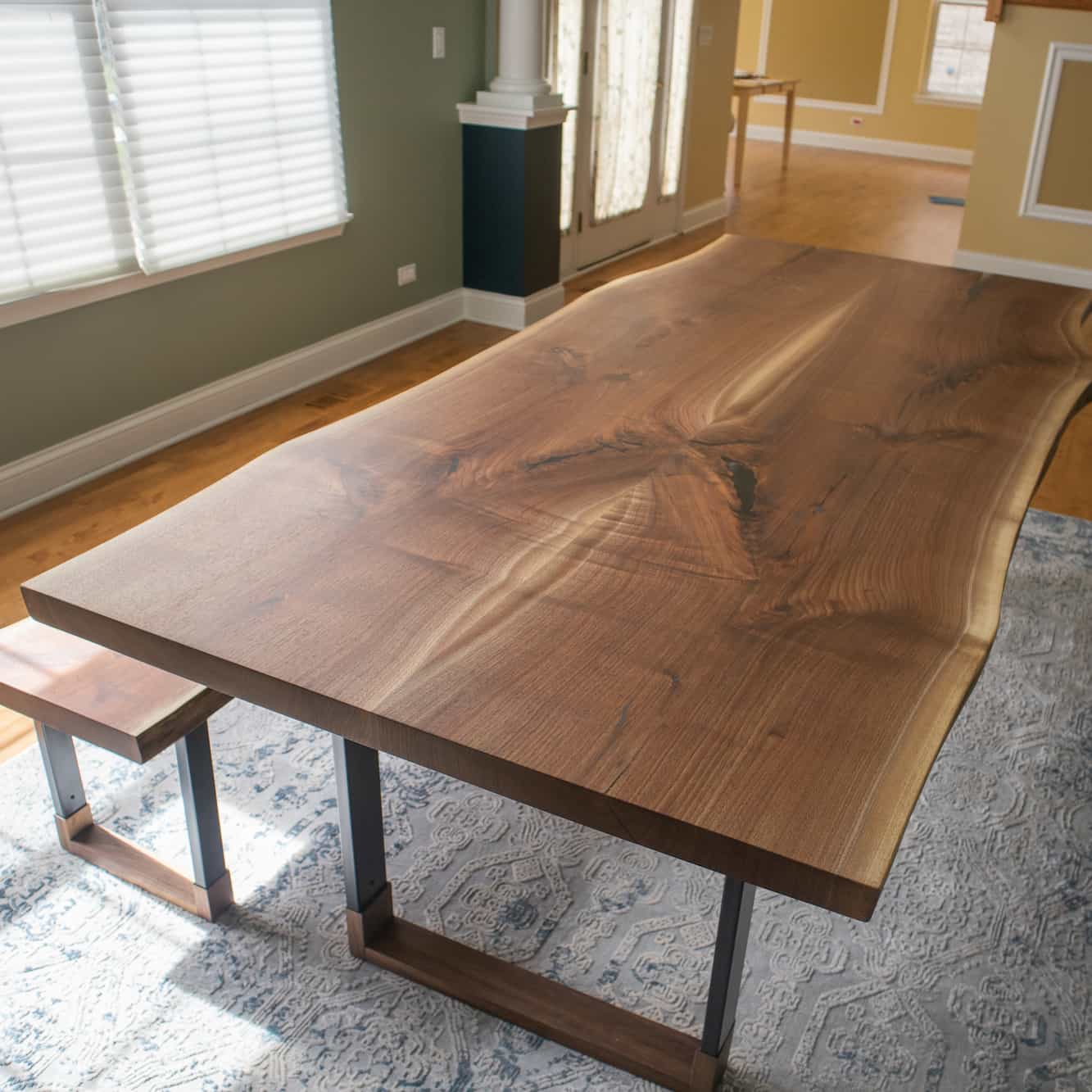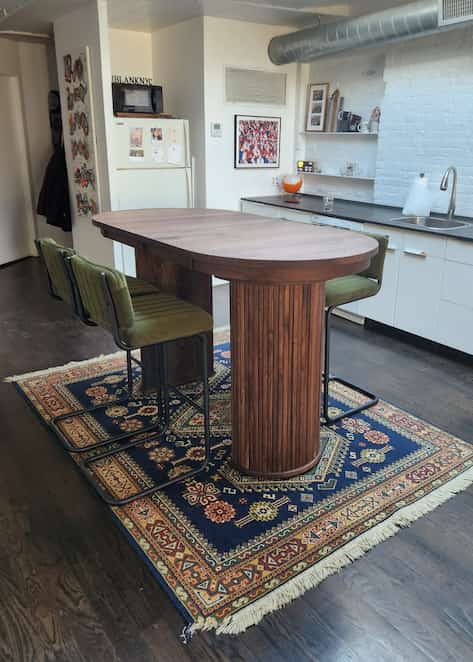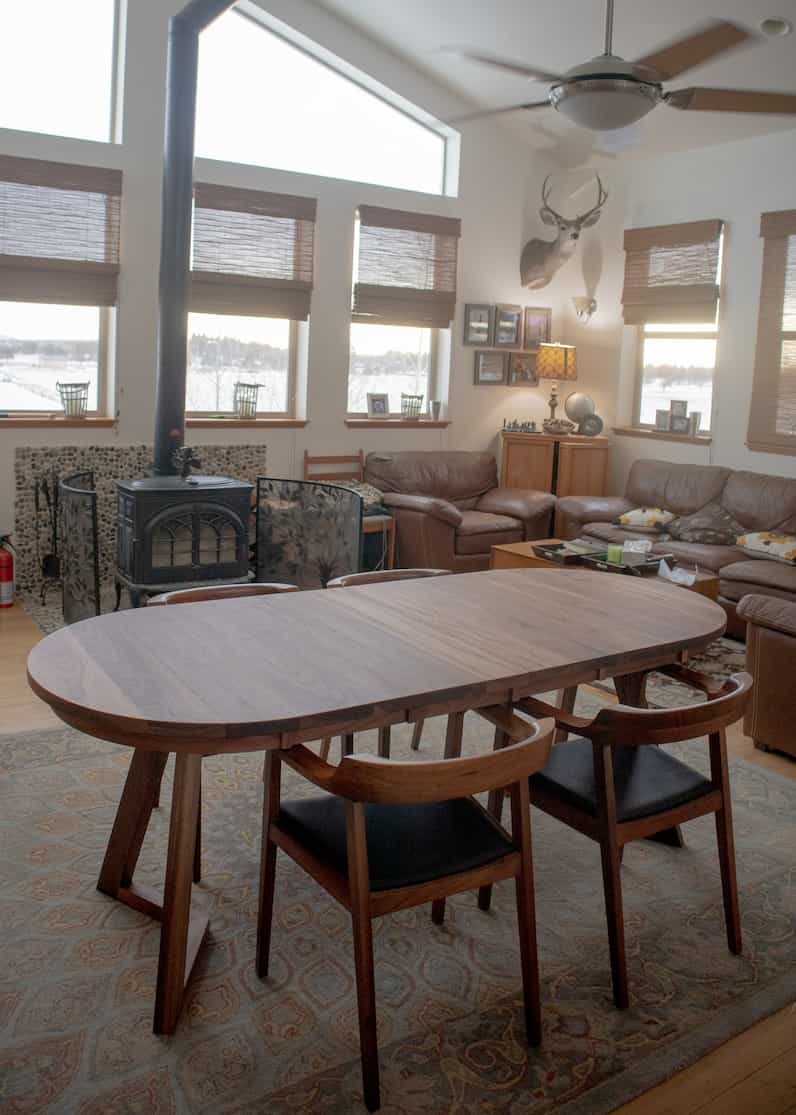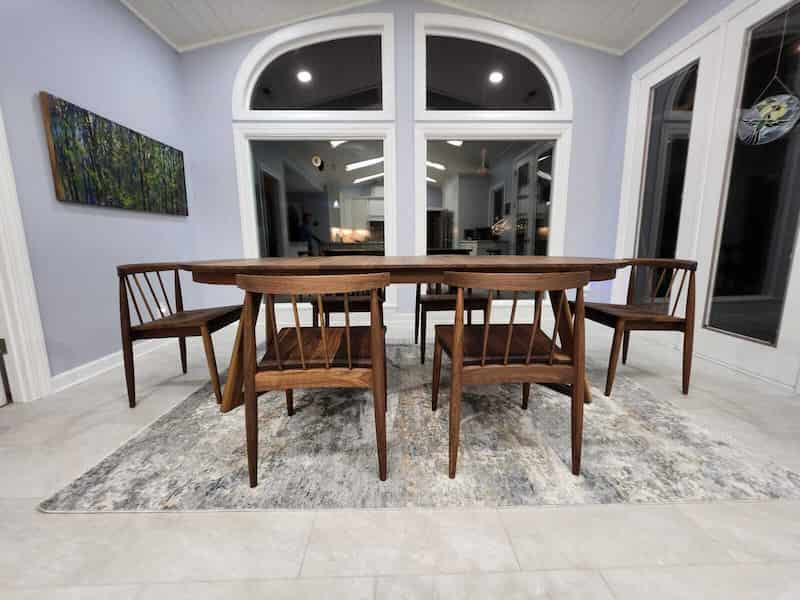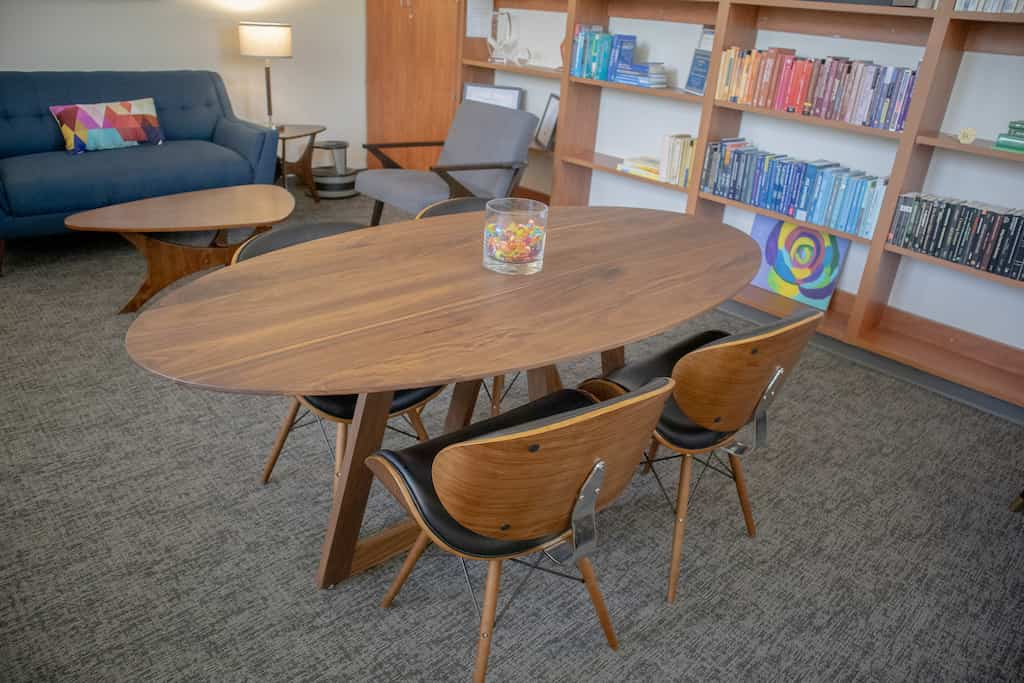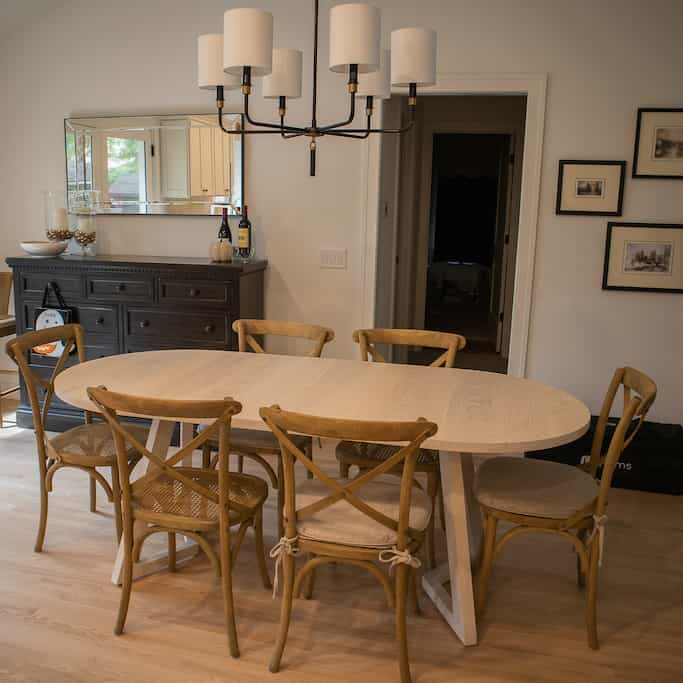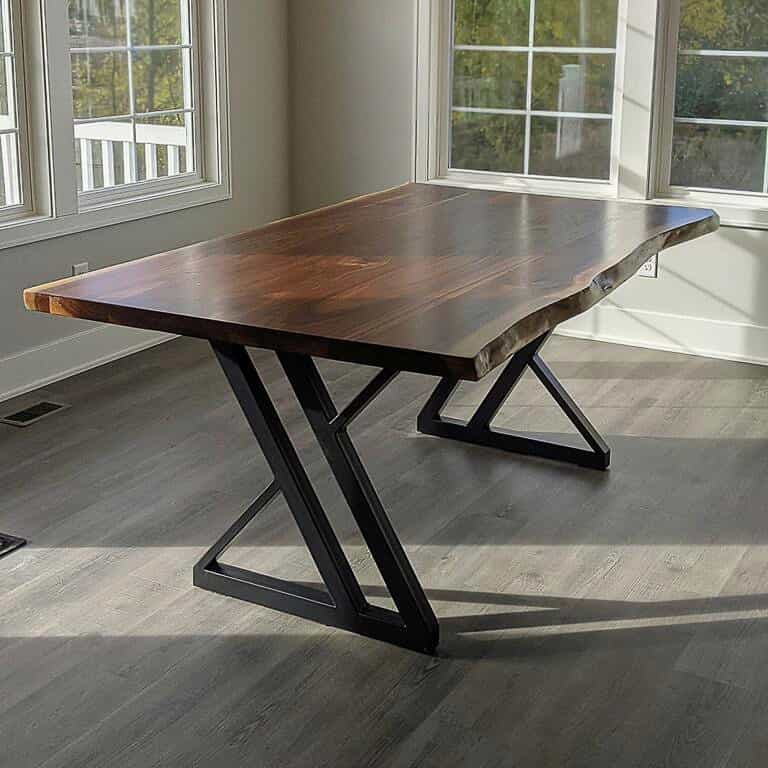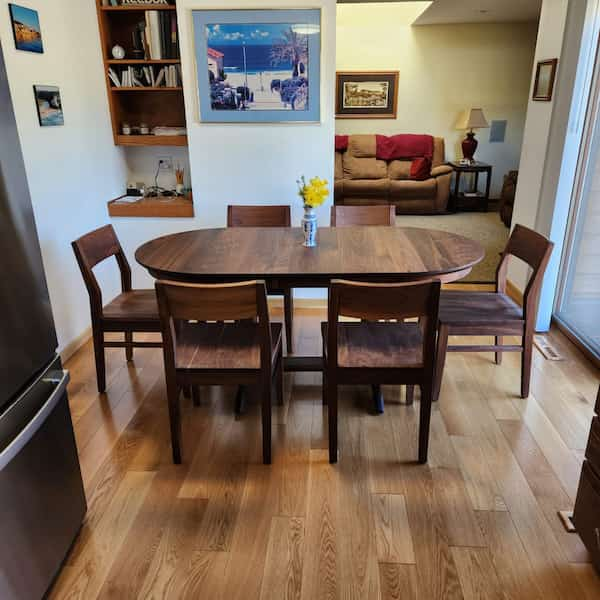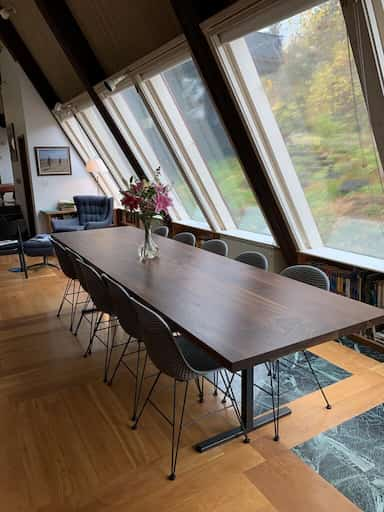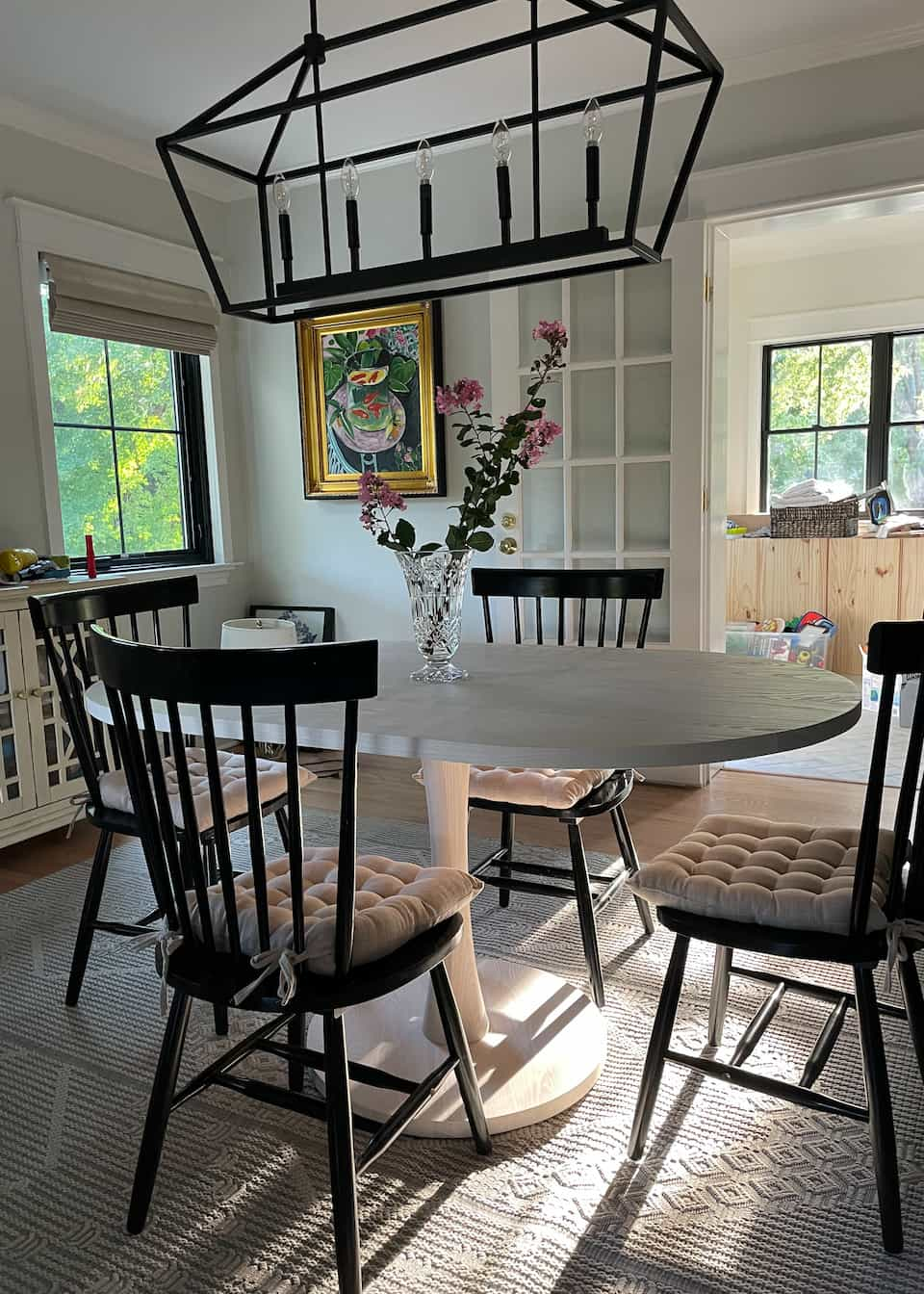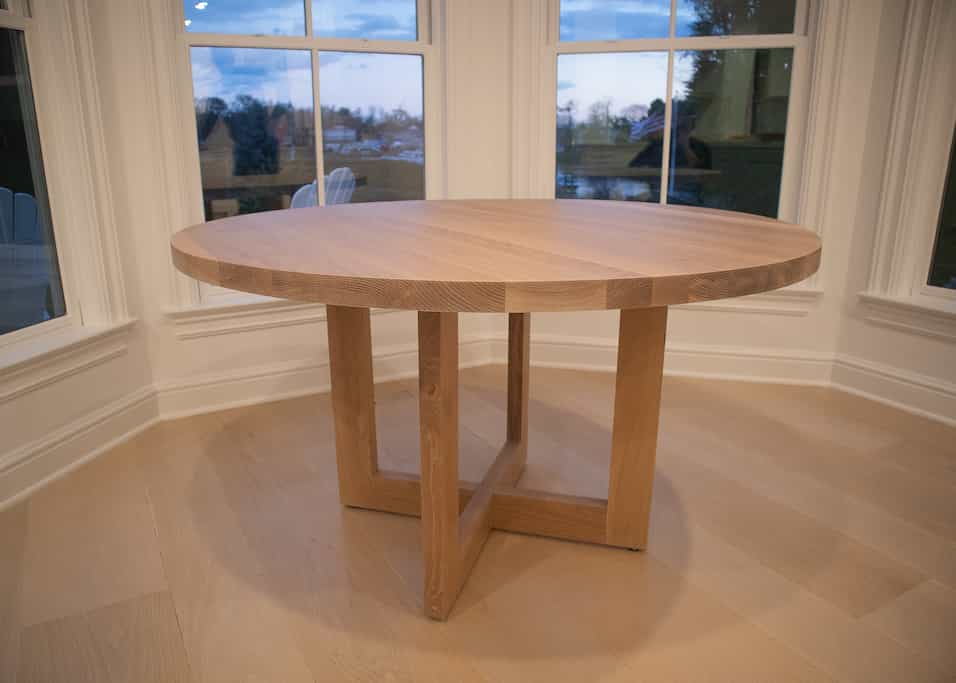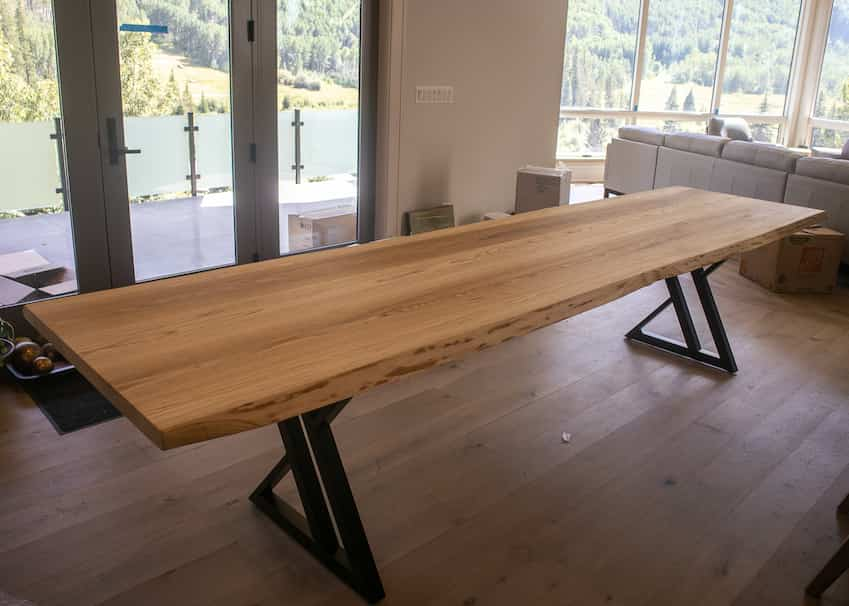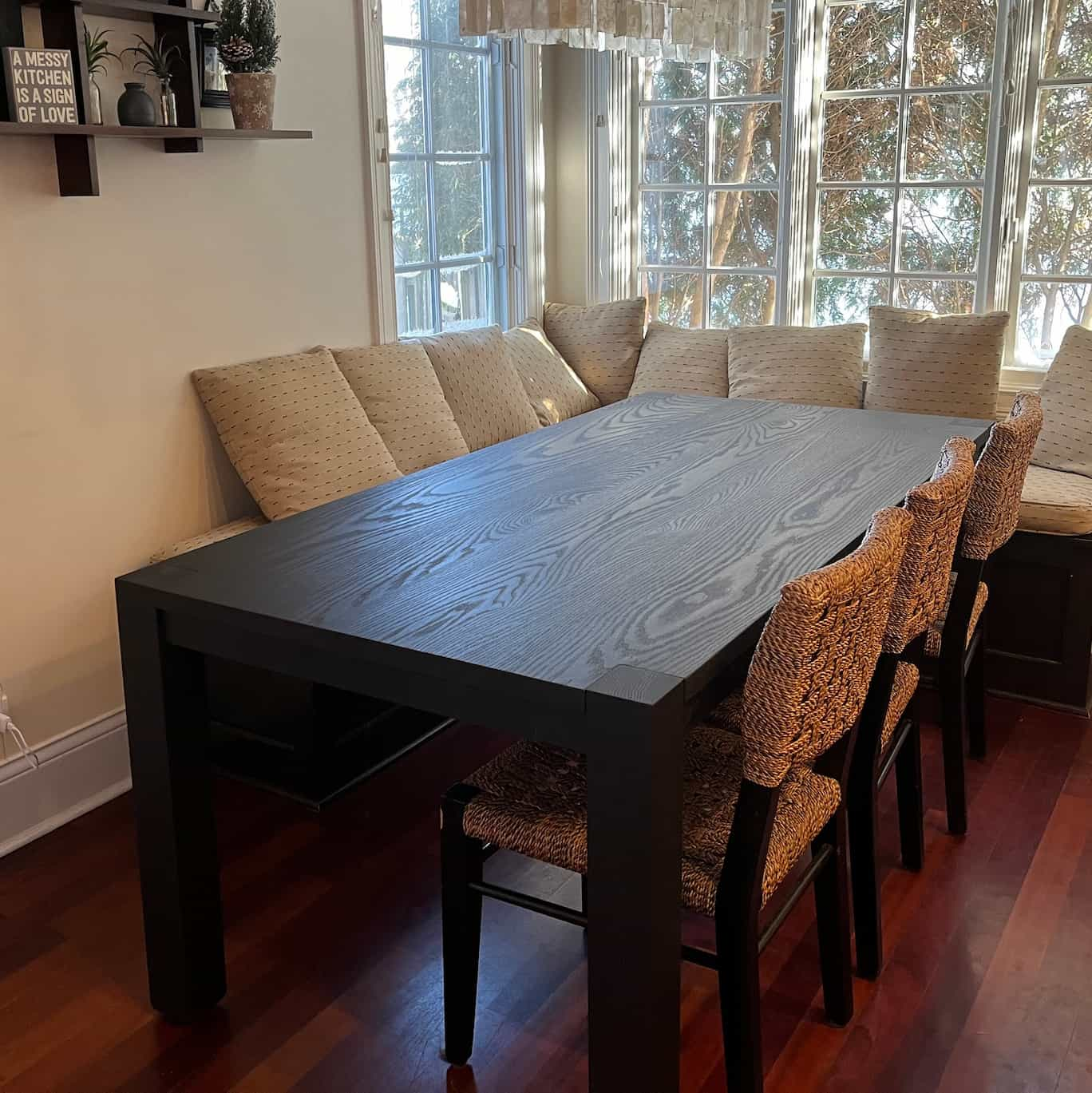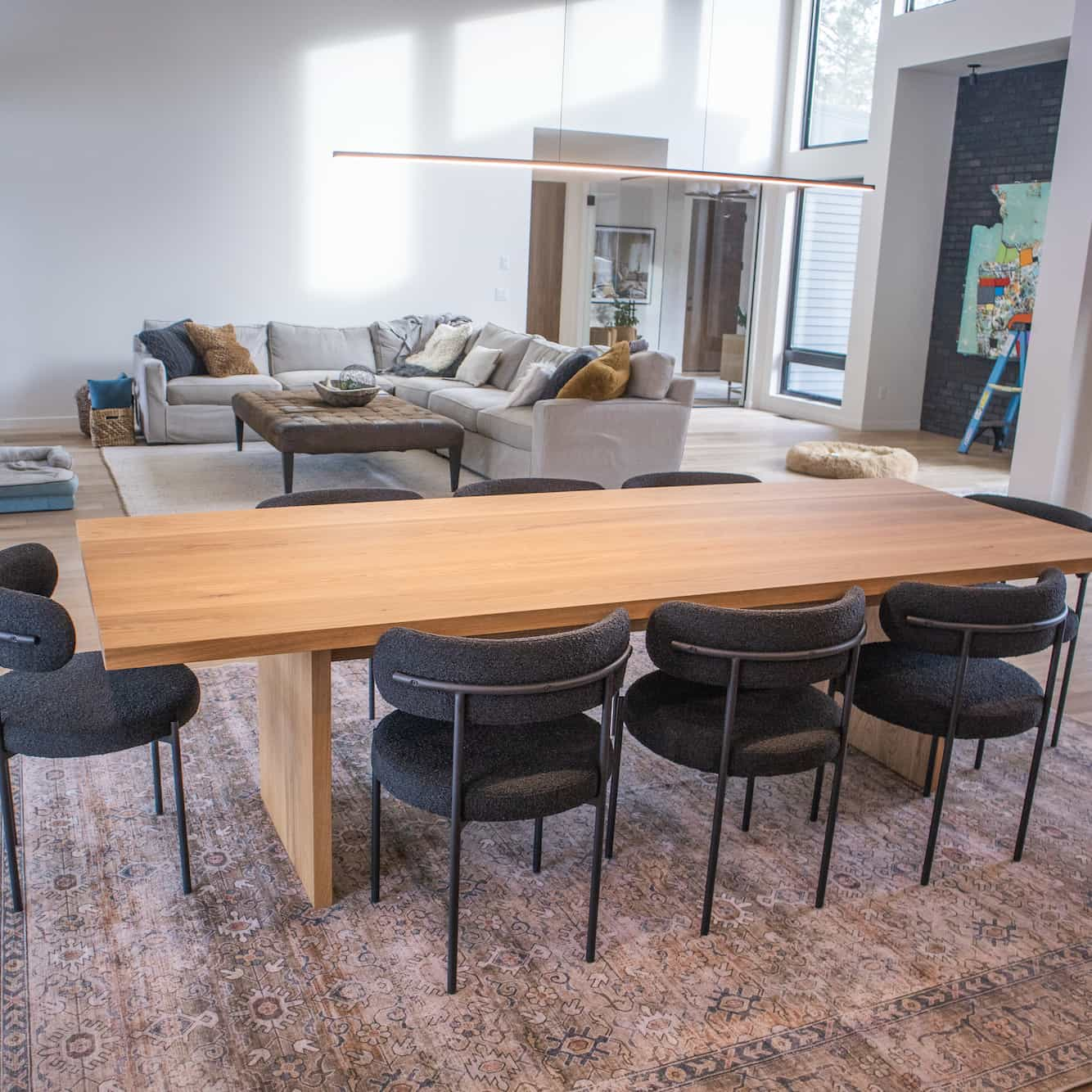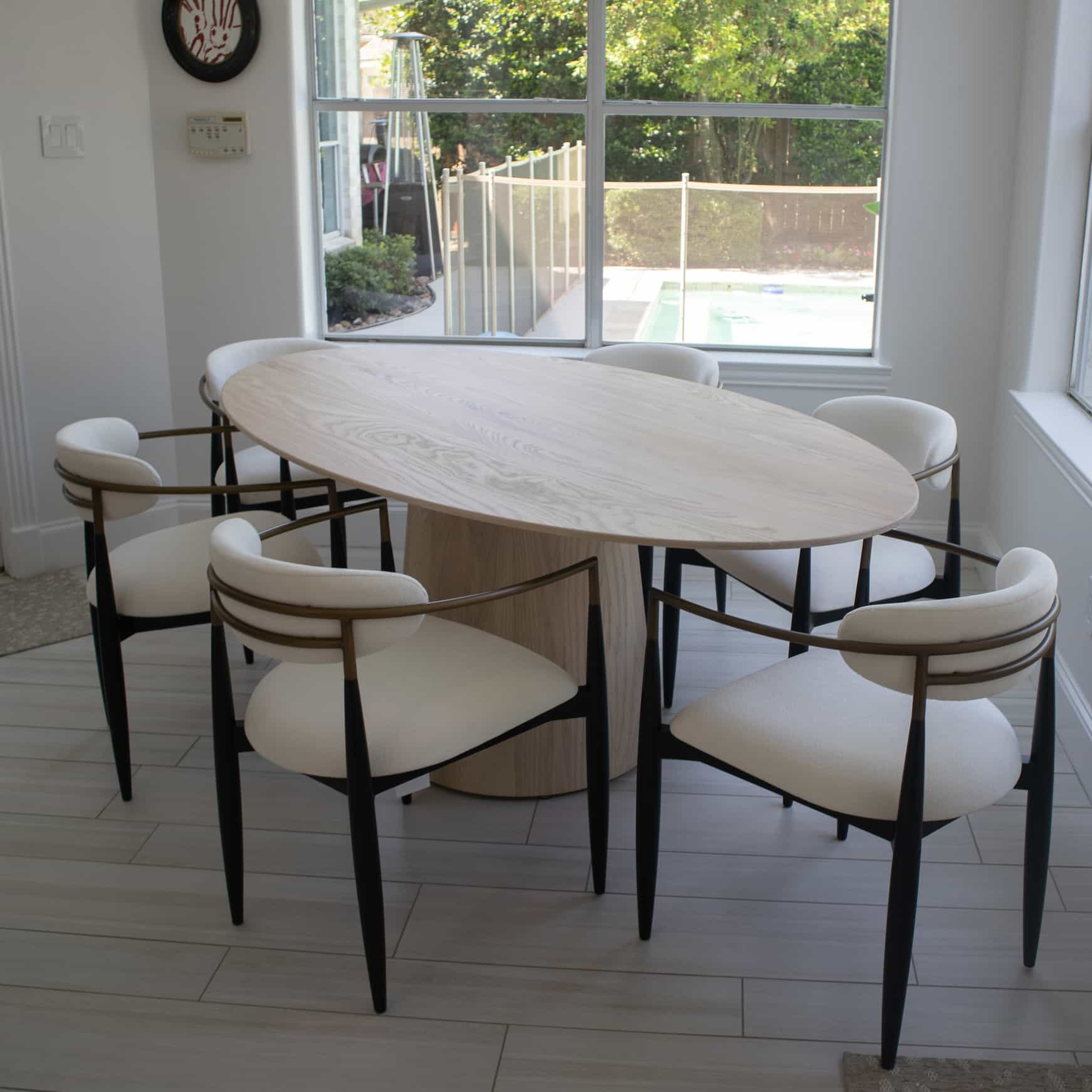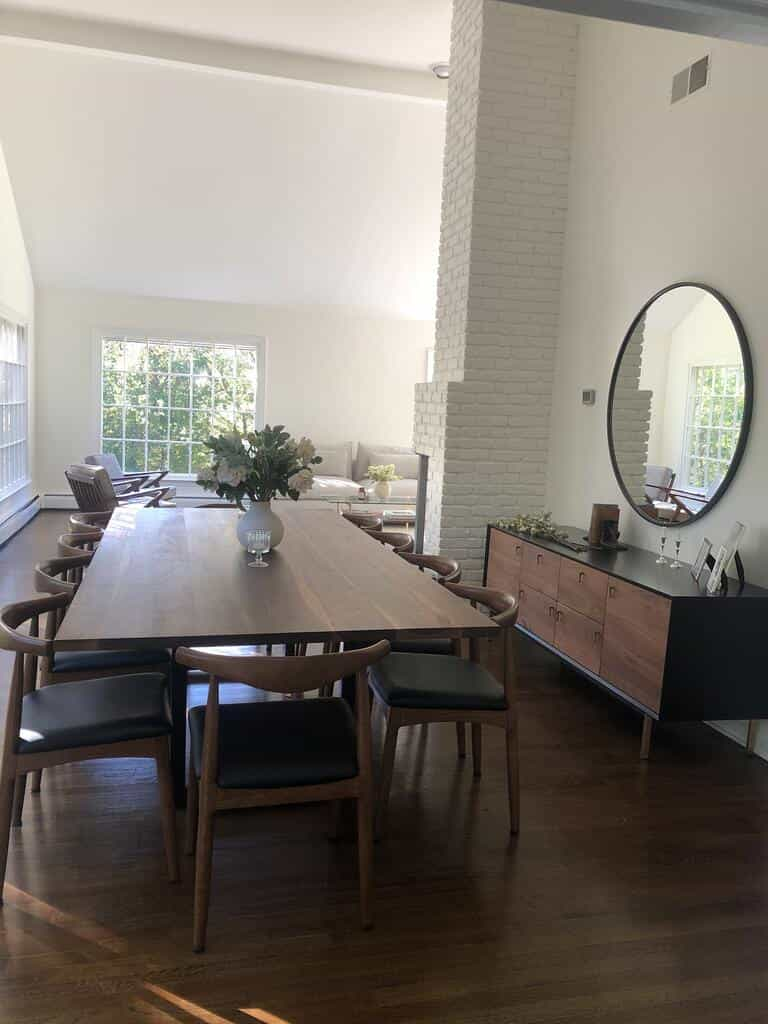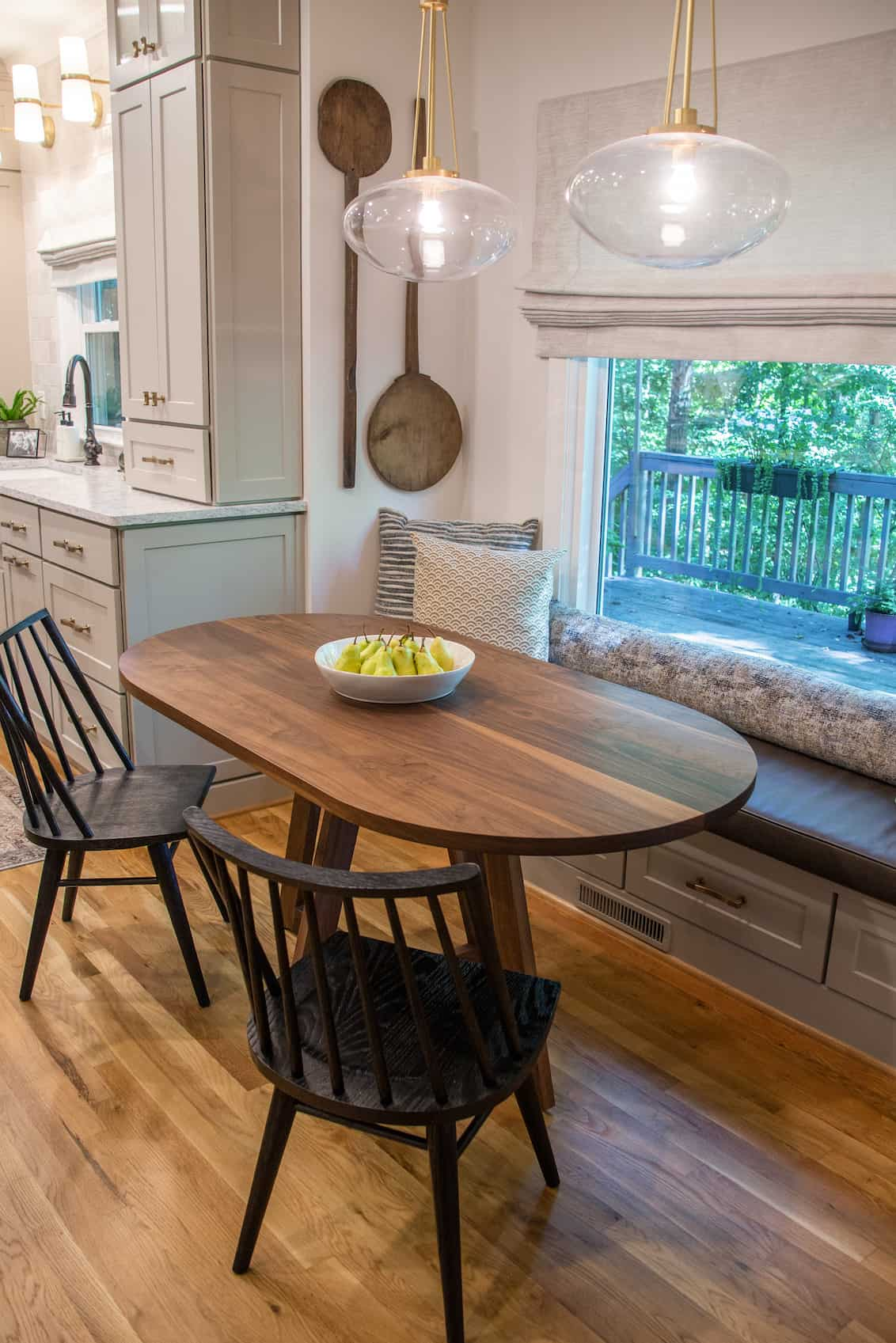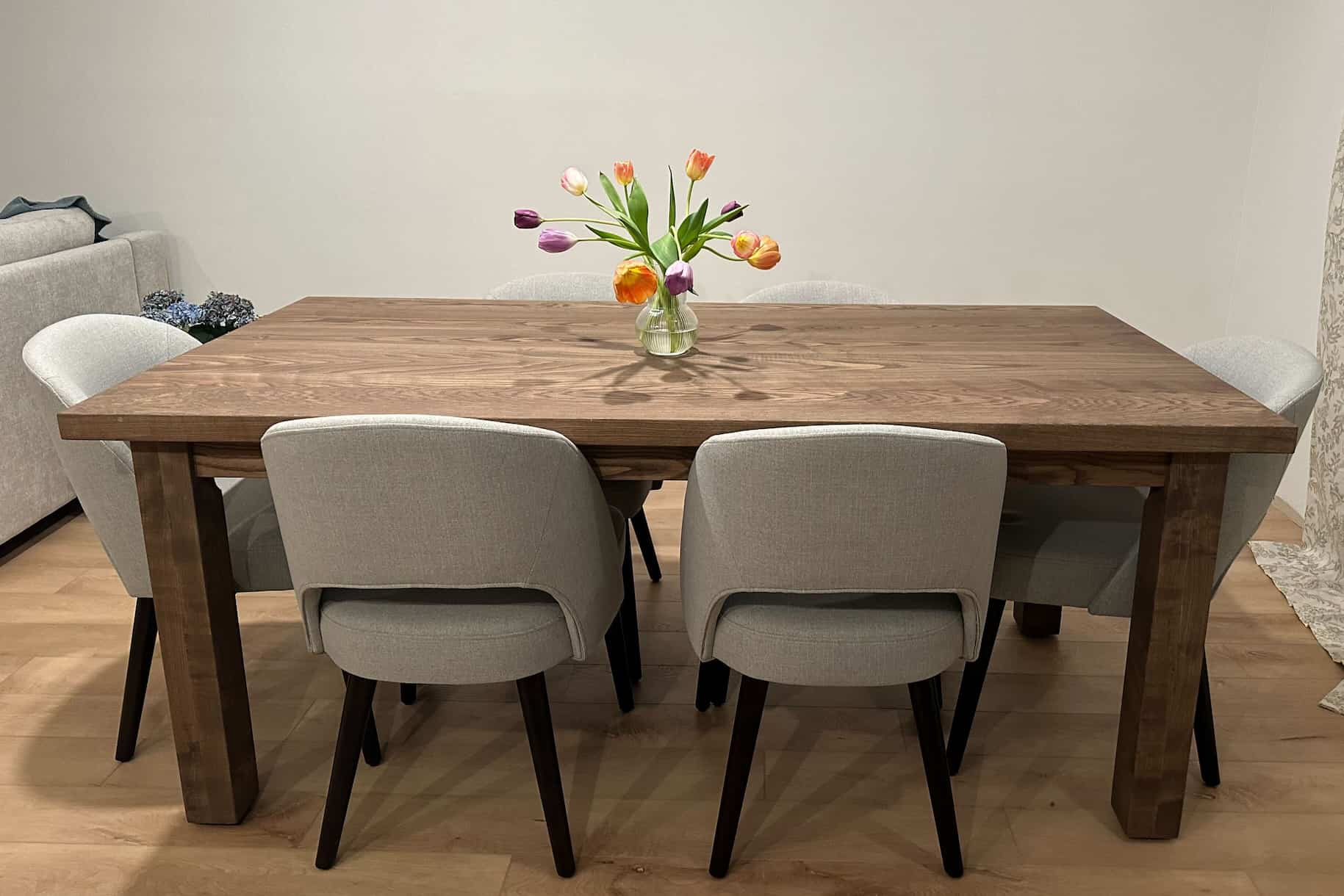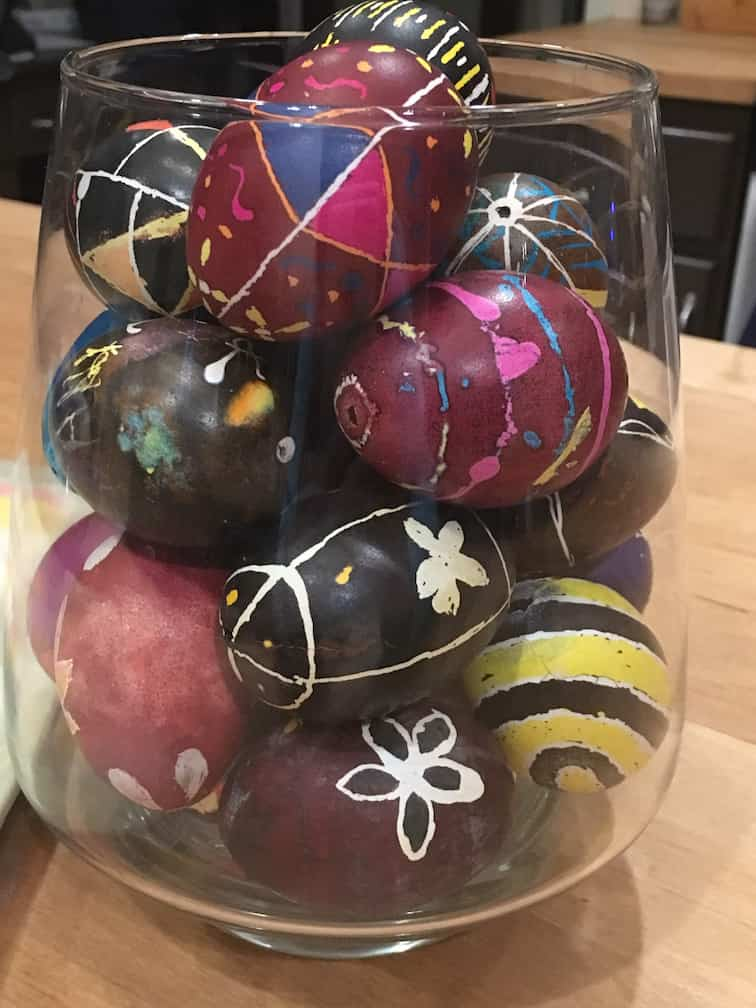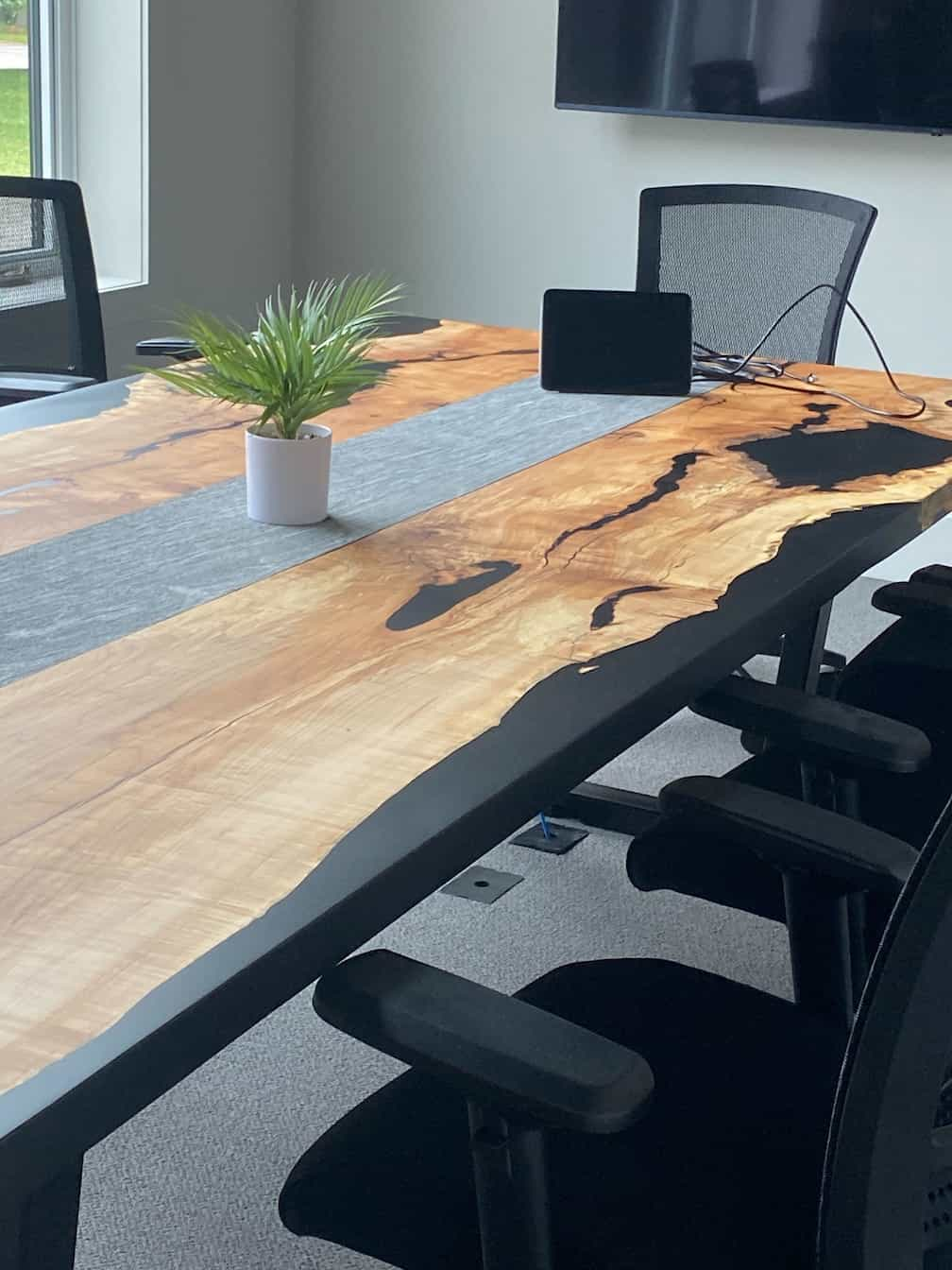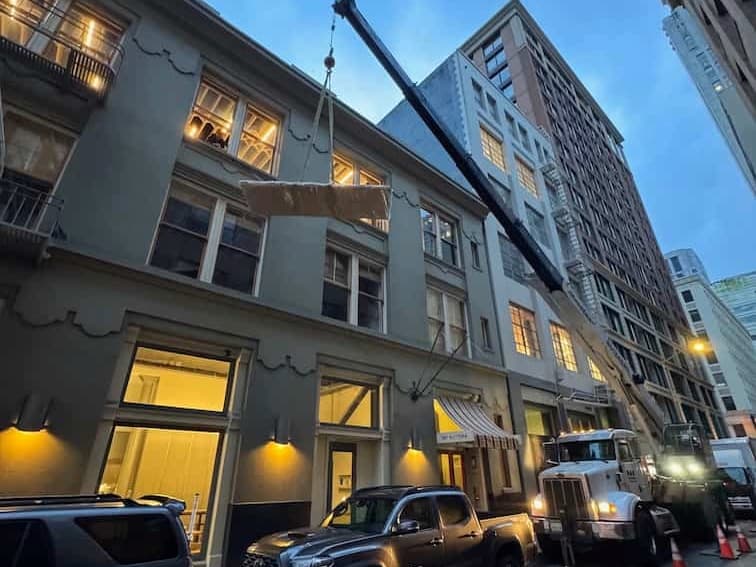Every table has a base. They all touch the ground somehow. At least, until someone figures out floating tables. (I'm thinking magnets, scientists get on it.) Table bases can look like anything, they can be any shape, as long as they hold the table up. But they're all basically one of four different styles: Pedestal, Trestle, 2 legs, or 4 legs. I'll call the 4 legs Parson - there are a couple other 4 leg options, but most of the best ones are Parson style.
I like to order these 4 styles in that order, as it is (generally) from the closest to the middle to the closest to the corners. Pedestal bases go in the middle of the table, Parsons on the corners. Let's explore each of these different styles, and when they're best.
Pedestal Bases
- Centered on the Table
- Great for Square and Round Tables
- Great for Small Tables

Pedestal bases support the center of the table and leave the sides open so chairs can go anywhere you want. A pedestal base is always a balance between wanting space for everyone’s legs under the table and wanting maximum stability. There are 2 main sorts of pedestal bases, ones with a small post in the middle and a larger ‘plate’ on the floor, and ones that stay about the same size all the way down. The post and plate is usually better for smaller tables, offering more room for legs. Larger bases, like a cylinder, are often better for larger tables. Pedestal bases are particularly useful under round and square tables, where there's consistent space all around the table.

Trestle Bases
- A Pair of legs with a stringer
- Centered on the table
- Great for rectangular or oval tables
- Best for medium-large tables

You can think of these bases as a pair of legs (usually sitting a bit closer to the middle of the table) joined by a stringer or a ‘trestle’. These bases, again, let you make use of the corners of the table. Some styles of trestle bases have legs that come out wider in some spots, making them functionally more similar to a pair of legs, while some can be a little more like a pedestal. Trestle bases are typically made of wood, though they can be made of steel or a combination of wood and steel. The style of a trestle base usually leans traditional, farmhouse or modern.

Leg Pairs
- 2 separate legs spread out toward the ends of the table
- Great for rectangular or oval tables
- Great for any size table.

Often, a table will sit on a pair of steel or wood legs. These legs allow you to use the corners of the table but you do need to be aware of where the legs will be. Depending on where your chairs sit, (based on the size of your chairs, number of chairs, and the size of your table) a guest may need to have one knee on either side of the leg. This isn’t usually a problem but worth being aware of. On the ends, depending on the leg design, a guest may be able to stretch their legs through the table legs. In this case, you can place the table legs closer to the ends. Pairs of legs come in a range of different styles.

Parson Bases
- 4 posts are each in the corners of the table
- Great for squares and rectangles
- Great for any size table, especially solid for very big tables.

Parsons bases are very sturdy, classic table bases with a skirt around the table and a leg in each corner. Functionally, Parsons bases give you lots of flexibility on where you place your chairs as long as you don’t want to use the corners. These bases are also incredibly stable, with every corner well supported. With the legs in each corner, this style pairs best with squares or rectangles.

The type of table base that is going to work best for you is first and foremost a question of function. Within each of these types of bases, you can find options for a range of design styles. Our design team would be happy to help you find the specific base that's right for you.

